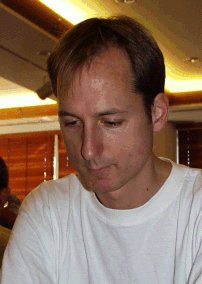BCN wishes Happy birthday to GM Jonathan Hawkins (01-v-1983)
Here is his Wikipedia entry
Jonathan was Southern Counties (SCCU) champion for the 2014-15 season sharing with Keith Arkell.
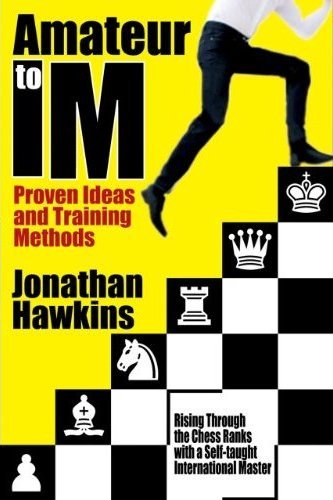

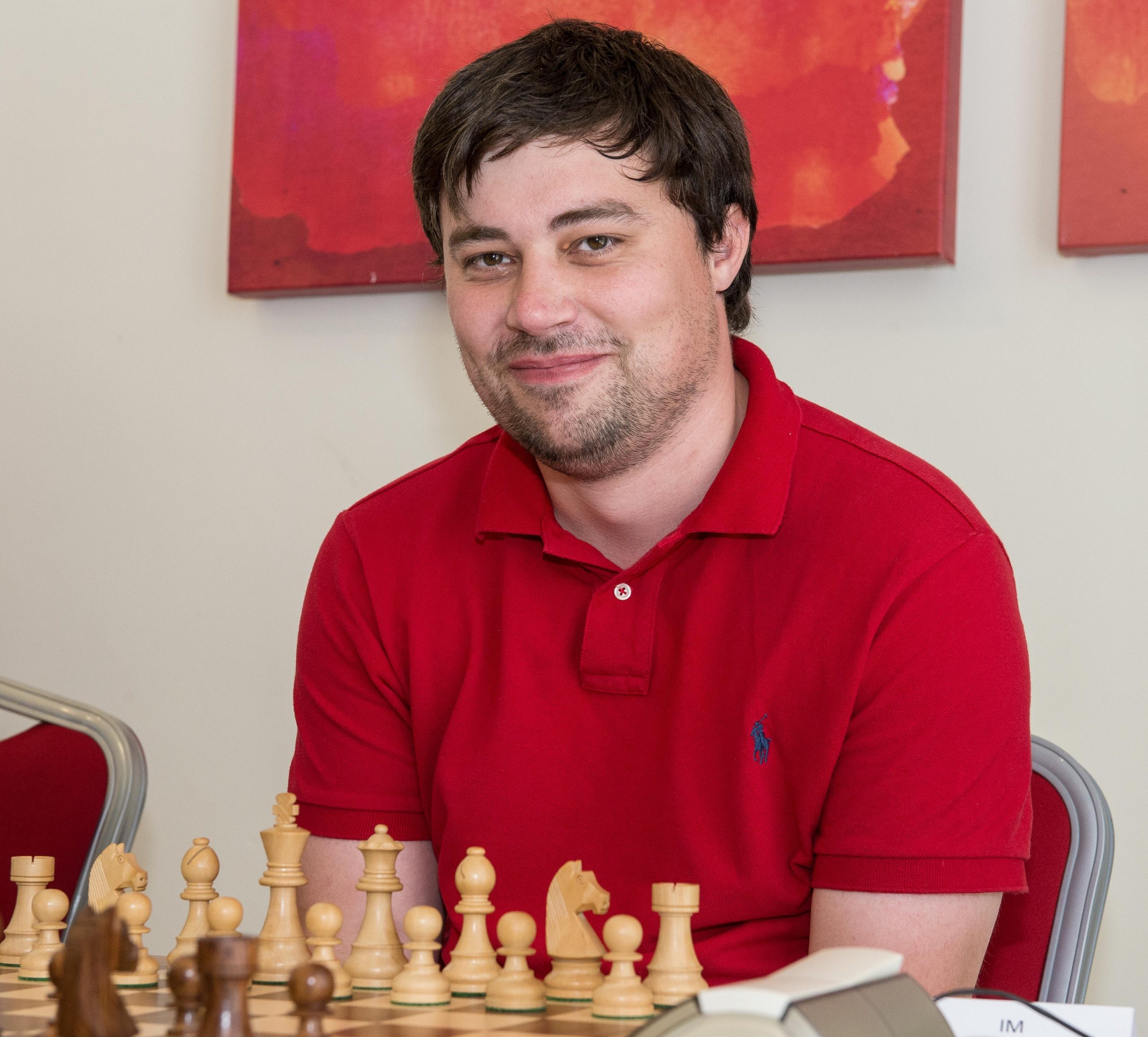
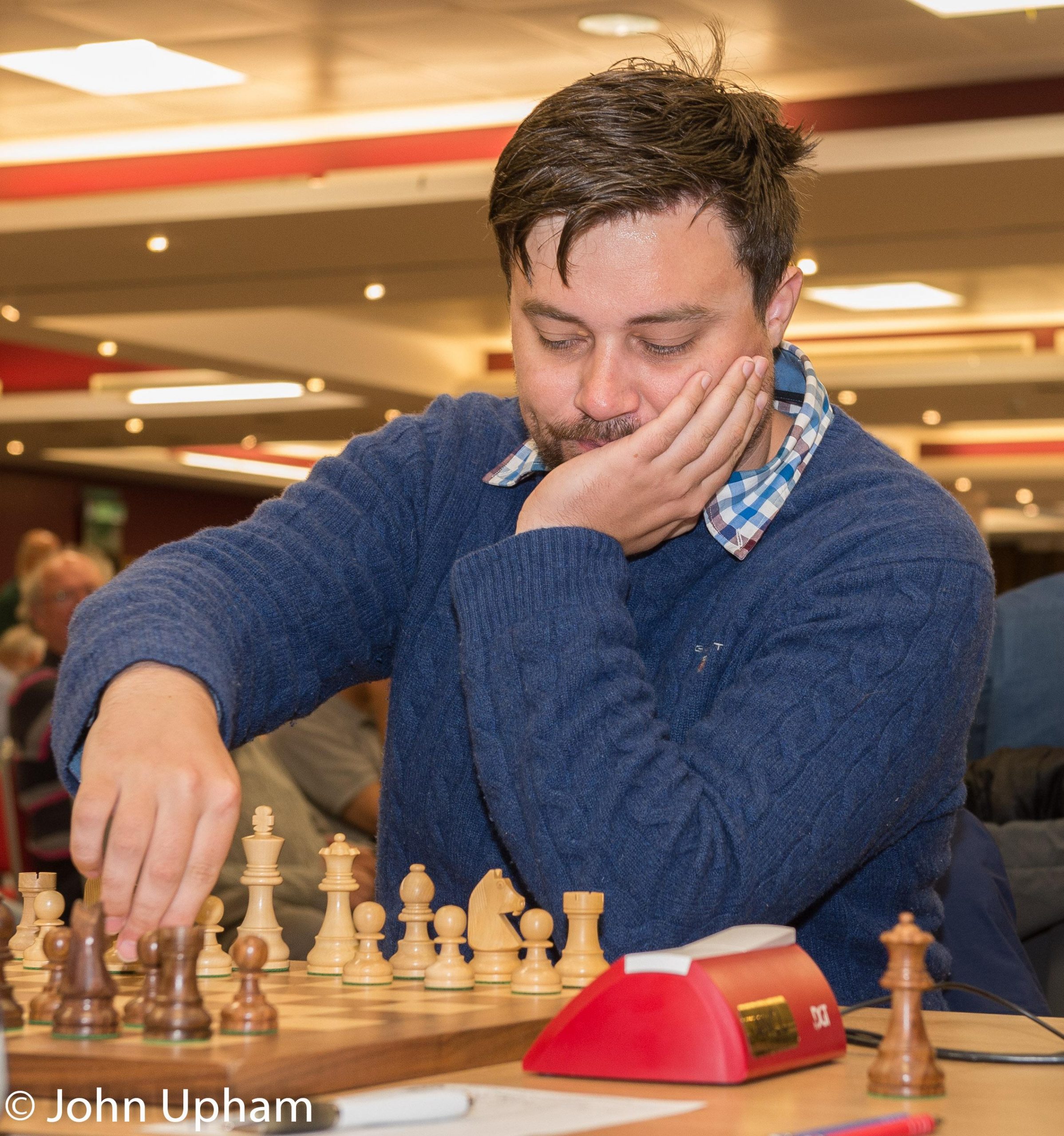
BCN wishes Happy birthday to GM Jonathan Hawkins (01-v-1983)
Here is his Wikipedia entry
Jonathan was Southern Counties (SCCU) champion for the 2014-15 season sharing with Keith Arkell.




BCN wishes IM Lawrence Trent (28-iv-1986) Happy Birthday!
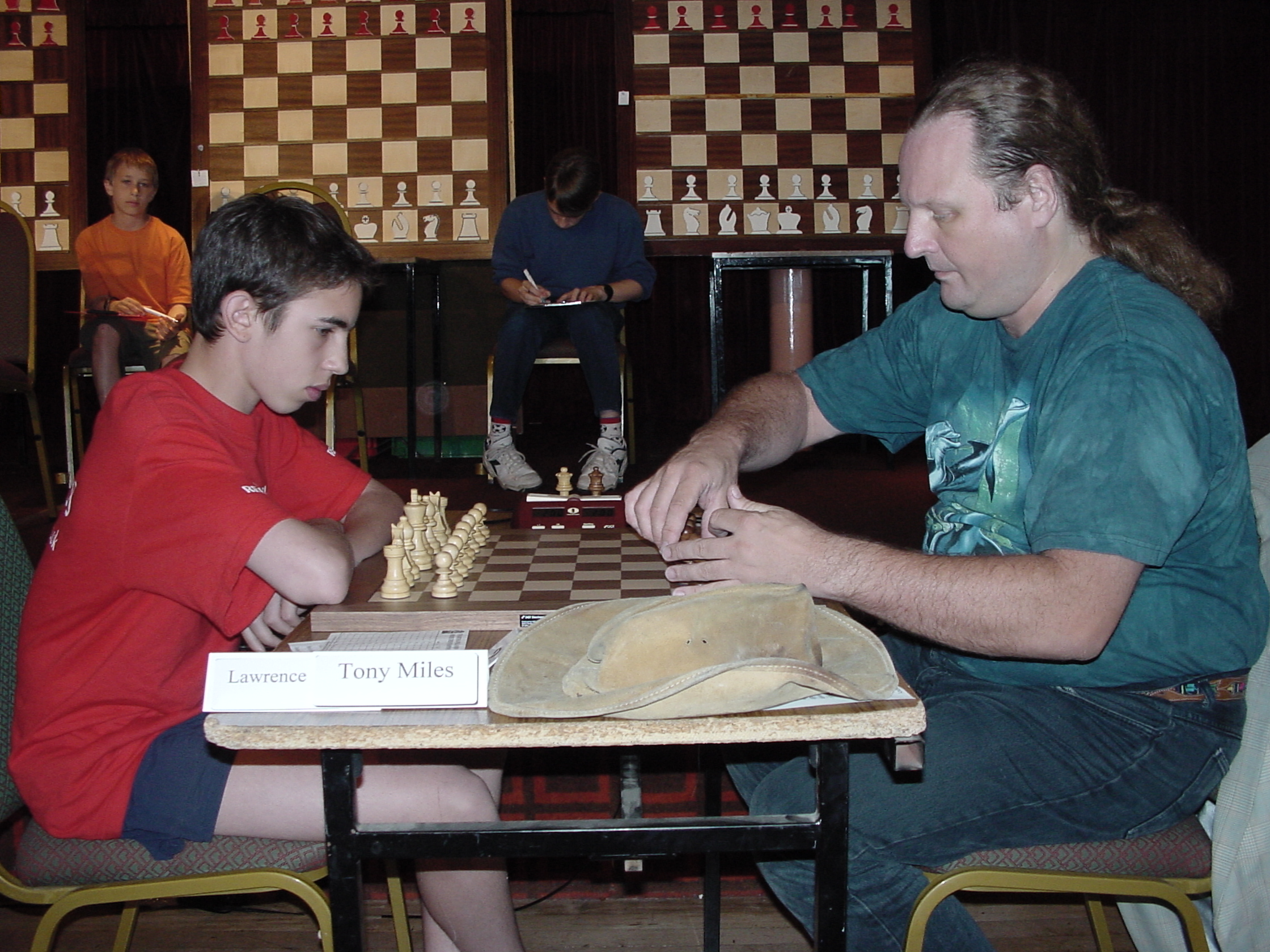
Here is his extensive Wikipedia entry
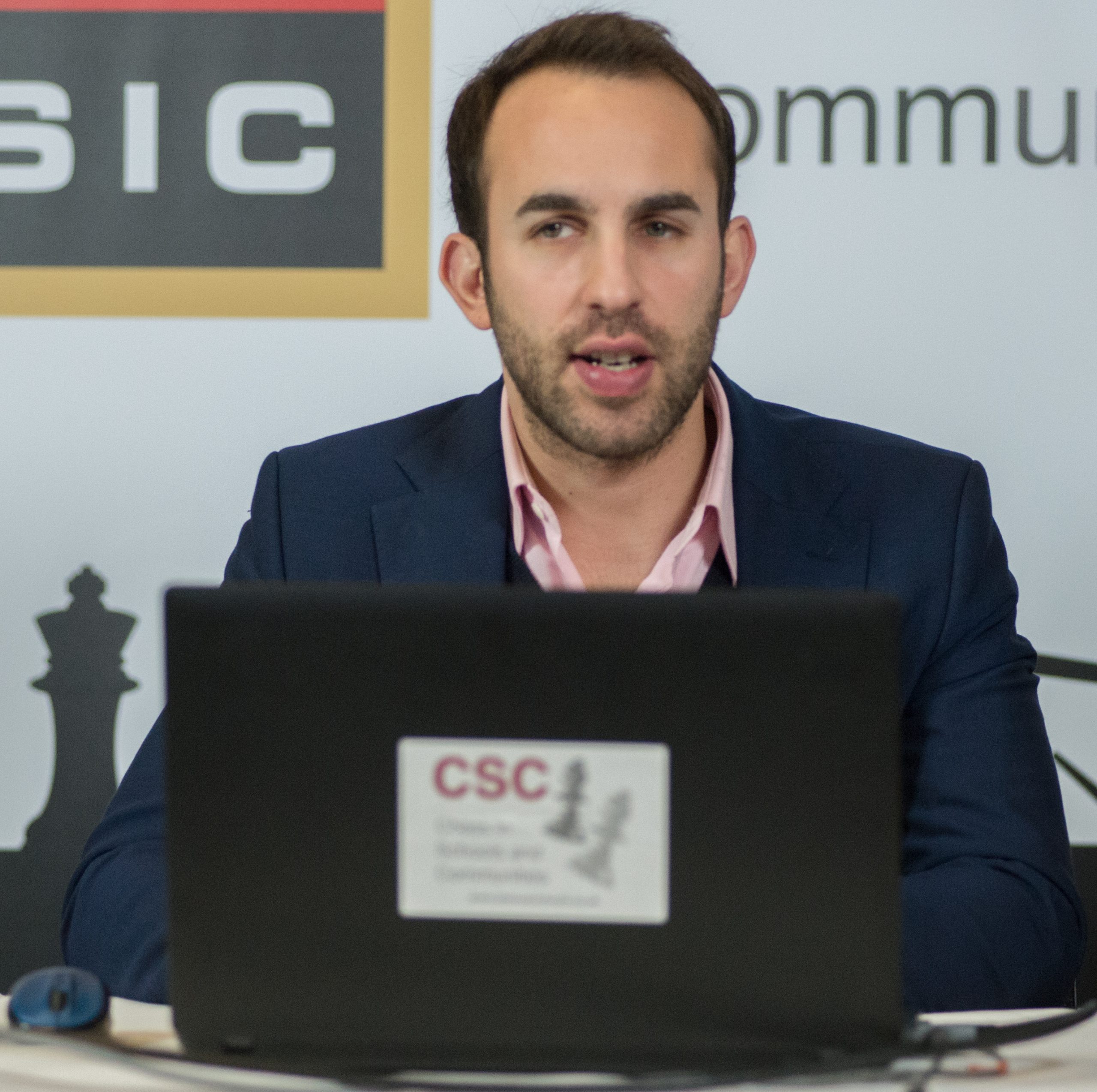
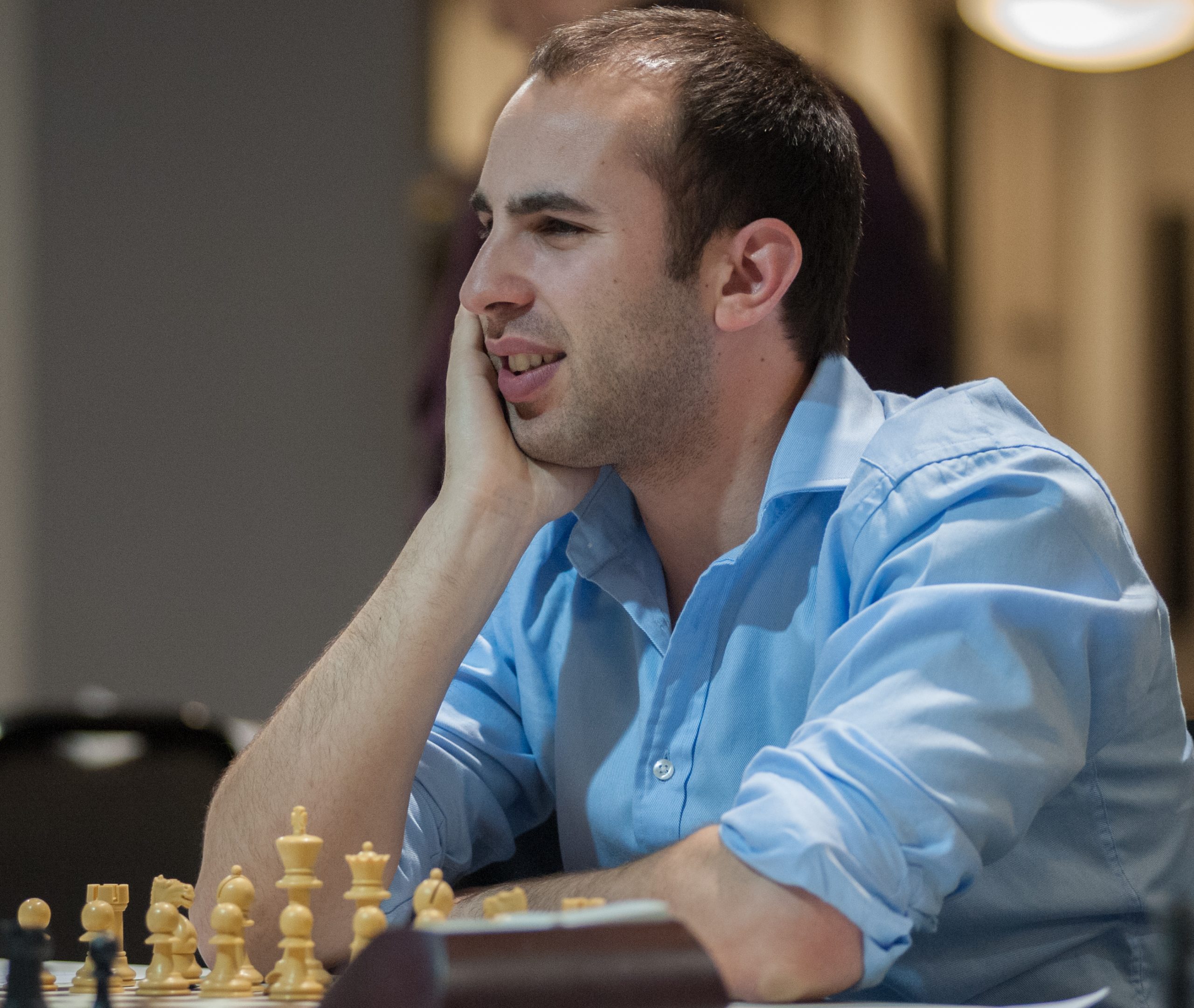
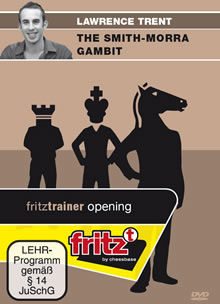
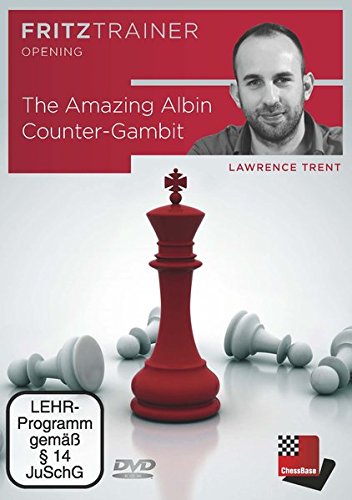

BCN wishes GM John Nunn Happy Birthday (25-iv-1955). John resides in Bude, Cornwall with his wife Petra (née Fink) having previously resided in Chobham, Surrey. John became a director of Gambit Publications Ltd. on January 30th, 1997 along with Murray Chandler and Graham Burgess. WFM Petra Nunn is the German editor.
Harry Golombek OBE wrote the following (presumably in 1978) in the 1979 Dataday chess diary:
“Fortunate is the country which has a number six player as good and as effective as John Nunn. As I wrote last time, ‘The former European Junior champion is such a fine player and pursues the game with such energy when he does play that one is apt to forget he is an amateur with only a limited amount of time to spare for study of the game.’
He like Mestel, obtained a grandmaster norm at the Lord John tournament where he score 5.5 points coming just below Mestel but beating both Quinteros and Torre in the process.
At the Moscow Team tournament, already mentioned, he had a magnificent result scoring 3.5 out of 7 on board 4. Perhaps it was this performance that increased his Elo rating by 30 points and when I say board 4 it should be realised that opposition consisted of such players as the former world champion Tal and many other genuine grandmasters. I give the entertaining and fighting draw he had with Tal as Moscow.”
From British Chess (Pergamon Press, 1983), pp.201- 210:
“It is a difficult task to pick out three games from many hundreds played over the years. What criteria should be used in the selection? Brilliance, strength of opponent, importance of result – all these are reasons for a game to stand out in one’s memory. As this selection is autobiographical I have given prominence to the last criterion and so I will give one game from each of the tournaments in which I gained an International title, and one game from a team tournament.
The first of these tournaments was the European Junior Championships held over the new year 1974-5 in the Dutch town of Groningen. It was only by chance that I played in this event at all. Originally Jonathan Mestel was the English representative, but he was invited to play in concurrent Hastings Premier and so I travelled to Groningen instead.
The organisation of the Championship has changed over the years, but at that time a seven-round Swiss formed a preliminary event, with the top ten of the twenty-eight participants going on to an all-play-all final section. The score thought to be sufficient for qualification was 4.5/7 and the accepted method of reaching this target was to win one’s first two games and then draw all the others., facilitated by the fact that one’s opponents would also require draws to reach the magic figure 4.5. However tie-breaking in the final was decided firstly by the score in the preliminaries and secondly by the result of the individual game in the final, so it was clearly an advantage to outstrip one’s rivals in the Swiss. I started with the requisite two wins and then drew my next three games, but in round six with the white pieces I decided to play for the win against Manny Rayner of Wales. I felt slightly self-conscious playing amidst a row of boards on which peace has been concluded at an early stage, but I did gain the full point. The game stirred up a certain amount of comment and I even heard one player’s second declare
You can’t trust Nunn!
In such a short race there will inevitably be upsets and the unlucky man on this occasion was Alexander Ivanov, the Russian representative.
The final round started less smoothly for me and after five rounds the leading scores were Borokowski 4, Szekely 3.5 and van der Sterren and myself on 3. I had already beaten van der Sterren, who had tied with me in the preliminaries, so in view of the tie-break rules, I had effectively half-a-point advantage over the rest of the field. In round six I played Borkowski and a win for would leave the tournament wide open.
I scored well in the three rounds after this game and appeared to have a good chance of winning. However in the penultimate round I lost to Lars-Ake Schneider in only 18 moves so as the last round started the leading scores were Szekely 5.5 out of 8 with Schneider, Borkowski and myself on 5. Skekely was White against Borkowski while I had White against the Israeli Grunfeld. Schneider blundered quickly and lost, while to my surprise Skekely drew in only 14 moves. The way was now open to the title if only I could defeat my opponent. However after 4.5 hours play I had only a slight advantage. But then a curious thing happened. I made my 40th move with a minute or two left on my clock and Grunfeld, who had half an hour left, replied almost immediately. The game was played to a finish without adjournment and now, with an hour on my clock, I was able to see that his 40th move was a mistake allowing a decisive combination. This small event decided the result of the tournament and so I became European Junior Champion and an International Master.
The second game was played in the Finals of the European Team Championship held at Moscow 1977. This event which takes place every three years, is second in importance only to the biennial Olympiads. The twenty teams entering were divided into five preliminary groups to produce seven qualifiers for the final. The USSR, as previous winners, were admitted directly to the final to make up the total of eight countries represented at Moscow. England qualified ahead of Holland, the other teams in this preliminary group being Wales and France. Since the matches in the final take place over eight boards this event is much more test of strength in the depth than the four board Olympiads and so England was not expected to do well, especially in view of the absence of Tony Miles. Nevertheless the final result of bottom place was a disappointment. My individual performance of 50% against strong opposition was quite satisfactory, but it was the following game which made the tournament particularly enjoyable for me.
We now move ahead to the summer of 1978. At this time I had a 9-game grandmaster norm from the Lord John Cup held in London during September 1977 and so I needed a 15-game norm to actually gain the title. In July I played in an event at Lublin in Poland at which, however, there was no GM norm. My play showed evidence of lack of practice and my final position was rather low.
Then I went on to the annual Tungsram tournament held in Budapest during August. This was a much stronger event (category 10) and the GM norm was a formidable 10 out of 15. However my play was much better than in Poland and, after a first round loss, I began to score well. After 12 rounds the leading scores were Kuzmin 8, Nunn 7.5 and Csom, Jansa, Adorjan and Mednis 7. I could have had half a point more if I had not overlooked a combination two (!) moves deep winning Kuzmin’s queen, but, apart from this incident Kuzmin had played very well and seemed to be heading for first prize.
My sights were firmly set on scoring 2.5 from the last three games to reach the GM norm and my interest in winning the tournament was secondary. However, Kuzmin was destined to lose his next two games and so these two objectives became one and the same.
In these final games I was to be White against F. Portisch (Lajos’ brother), Black against GM Jansa and in the last round White against Hardicsay, the weakest player in the tournament. The plan was clear – I had to win both games with White and hold Jansa to a draw with the Black pieces. The execution, however, was more difficult.
While preparing for F. Portisch I noticed that he played either the French or the Sicilian Pelikan. Since I was playing only for the win I naturally hoped he would opt for the complications of the Pelikan. Two days before this game I had been given a copy of the latest issue of the Hungarian chess magazine, Magyar Sakkelet, containing a game Honfi – Piasetki in which Honfi had played 11.Bxb5!? and won with the aid of a novelty. This piece sacrifice seemed to be ideal for stirring up as much trouble as possible and so I decided to try it in the game, at the same time hoping that F. Portsich had not read his magazine!
The first obstacle had been surmounted, but two more remained. The opening went badly against Jansa, but I managed to restrict myself to a small disadvantage in the early middle game. To my good fortune the Czech Grandmaster was going through a bad patch, having started with 7/10 anf then scored only half a point from his next three games. With only two rounds to go his interest in the tournament had dissipated and rather try to exploit his edge he offered a draw. Of course I was only too pleased to accept.
Before the last round I was extremely nervous but bolstered my confidence with that thought that Hardicsay had only managed to score 3.5/14 , and indeed had accumulated only half a point from his last six games. In most cases this was due to his chronic addiction to time trouble. At first things went well. I accepted a pawn sacrifice and gradually seemed to be repelling my opponent’s threats. But at a crucial moment I chose a faulty bishop move and suddenly my difficulties were growing from move to move. Before long I was pawn down with an inferior position. My only hope lay in the fact that Hardicsay had only seconds to make the last eight moves of the time control. Exploiting this, I regained the pawn and even adjourned with a slight plus.
After a one hour break play was resumed and once again Hardicsay played well, almost completely neutralizing my advantage. I cunningly made some pass moves with my King until he was once again in time trouble and then tried my last winning attempt!
In the event my opponent made a mistake and a further session was not necessary. The two spectators who had stuck it out to the end dashed up to congratulate me and Hardicsay gave me a distinctly sour look (justifiably!)- I had become a Grandmaster!
From The Encyclopaedia of Chess (Batsford, 1977) by Harry Golombek OBE :
British International master and European Junior Champion, 1975. Born in London, Nunn learned chess at the age of four and soon revealed a great aptitude for the game.
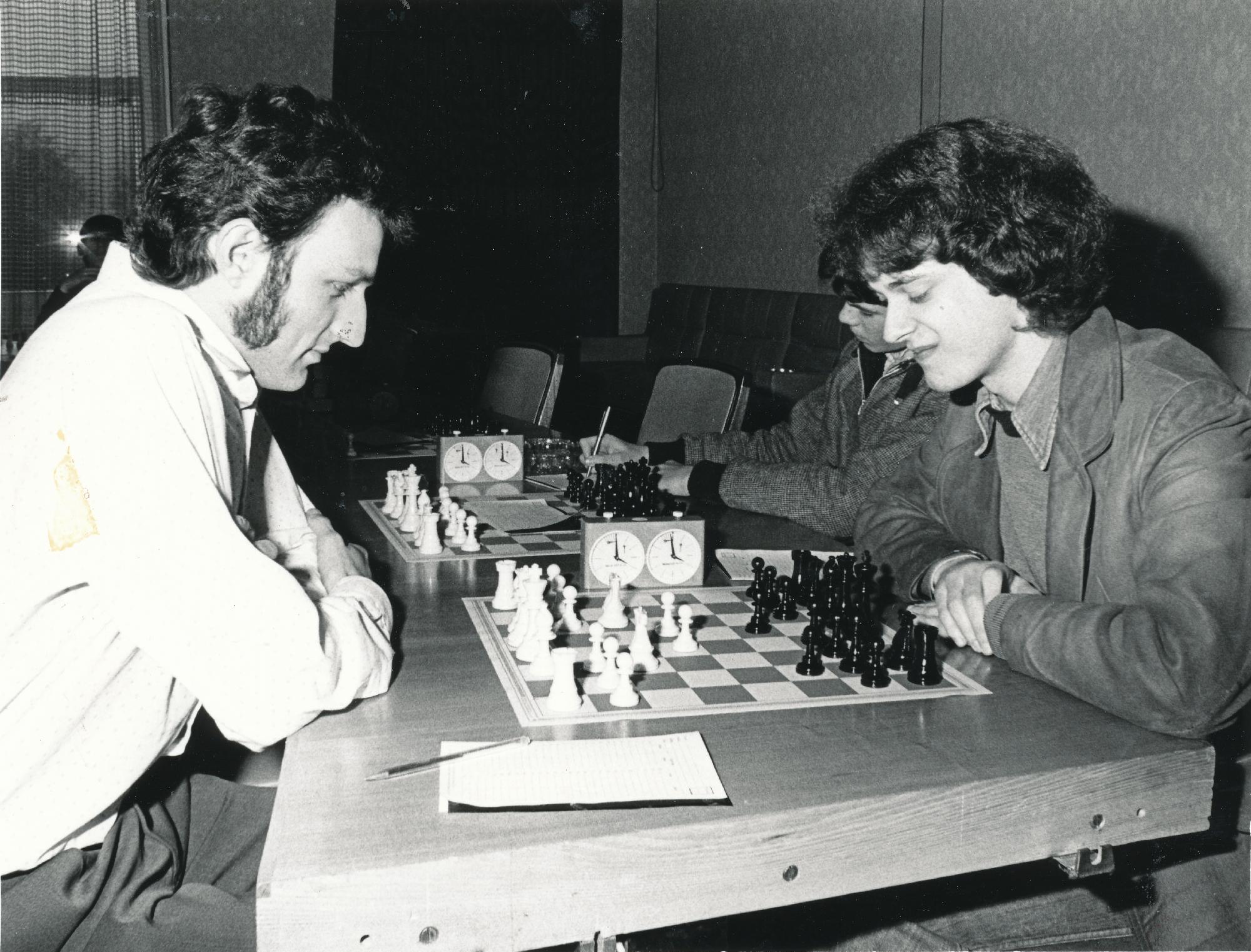

He came 6th in the Norwich Junior international tournament in 1970 and went up to Oxford University to take a mathematics degree at a very early age. He played on top board for the University from 1972-6 and is now preparing for a doctorate there.

He won the European Junior Championship and with it the international master title in Groningen in 1975. In that year too he was equal first in the IBM Master tournament, and at London in 1975 he reached an international master norm coming 5th in the international tournament there. He played on bottom board at the Haifa Olympiad 1976 and scored 64.2%

From The Oxford Companion to Chess by Hooper & Whyld :
English player. International Grandmaster (1978), British champion 1980. He went to Oxford at the unusually young age of 15, graduated in 1973. Gained his B.Sc. the following year and his
doctorate in 1978.

A Junior Research Fellow, he lectured in mathematics until 1981 when he became a professional player. By then he had already achieved several good results in international tournaments: Budapest 1978, first; Hastings 1979-80, first (4-5 = 10) equal with Andersson; Baden-bei-Wien 1980, category 12, third (+5=10) after Spassky and Belyavsky: Helsinki 1981, first (+5 = 6) equal with Matulovich; and Wiesbaden 1981, first (+6=3). In the category 12 Wijk aan Zee tournament 1982, Nunn came first ( + 5=7 — 1) equal with Balashov ahead of Tal, Hubner, and Timman and at Helsinki 1983 he came second (+5 = 6) after Karlsson.

Possessing a remarkably quick sight of the board, Nunn is an expert solver: he made the second highest individual score in the world team solving championship, 1978, and won the solving championship of Great Britain in 1981.
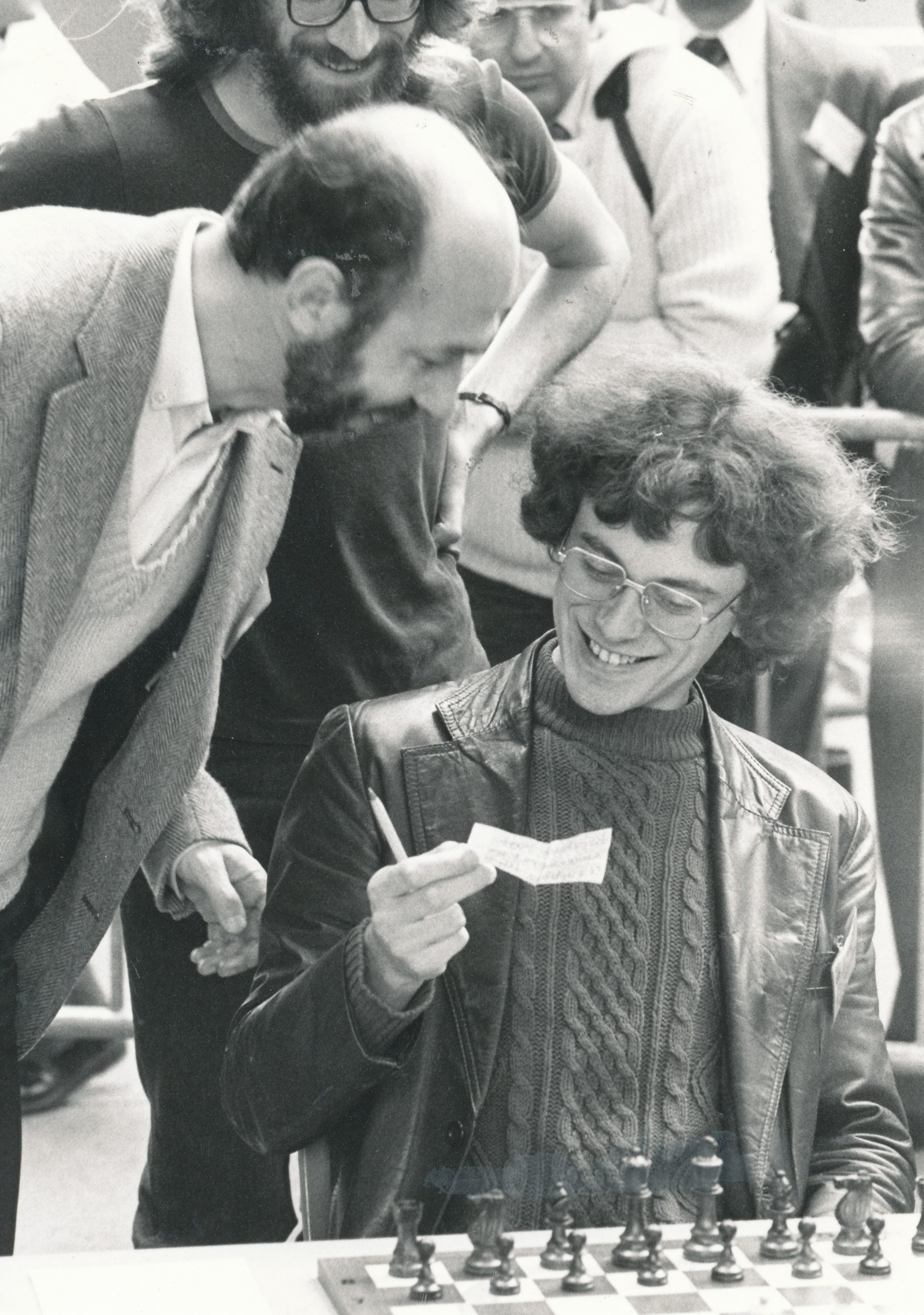
Here is an excellent article from ChessBase
Polugayevsky-Nunn European team championship :
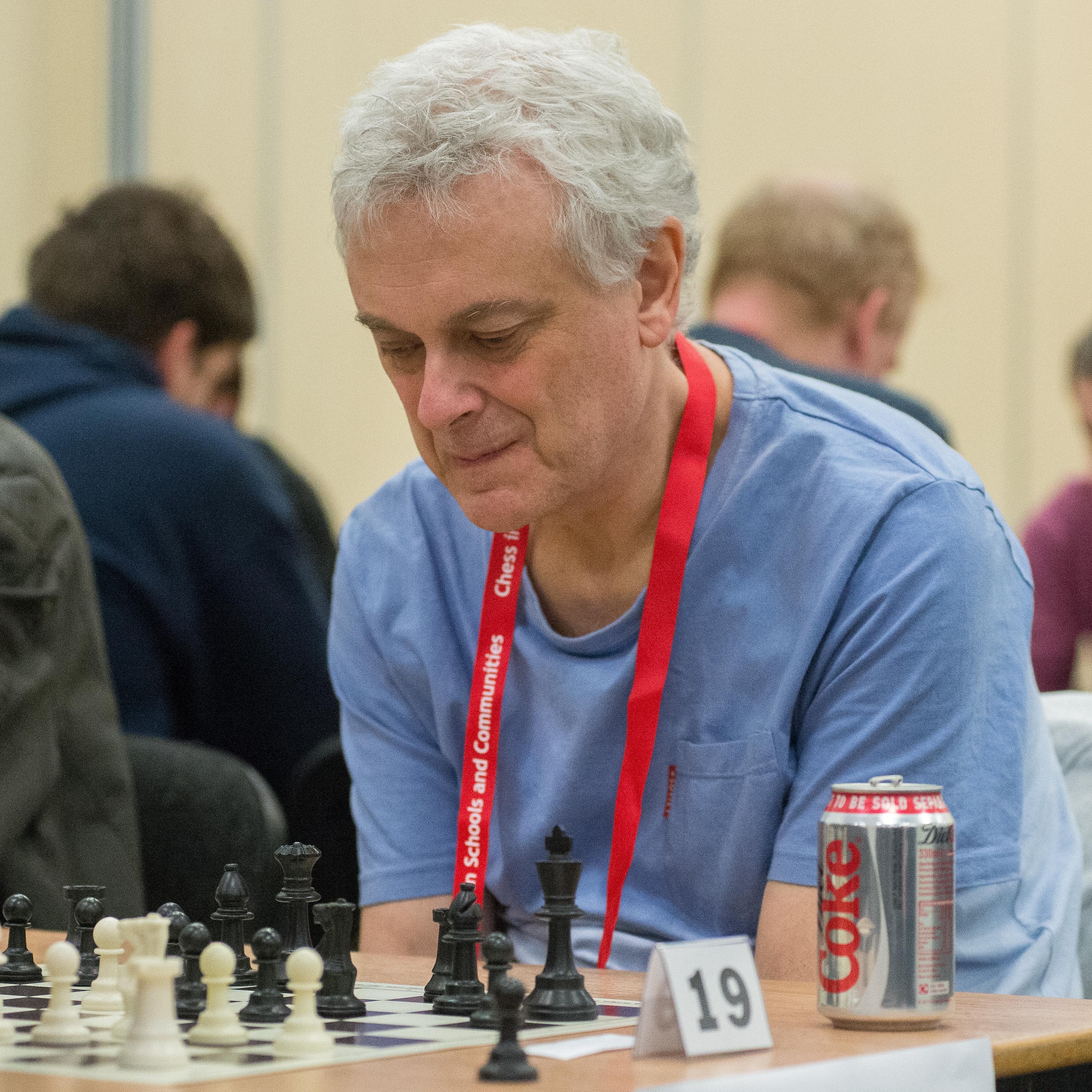
Here is his Wikipedia entry
John and his partner WFM Petra Nunn have recently relocated from Chobham in Surrey to the West Country. We wish them a happy retirement!
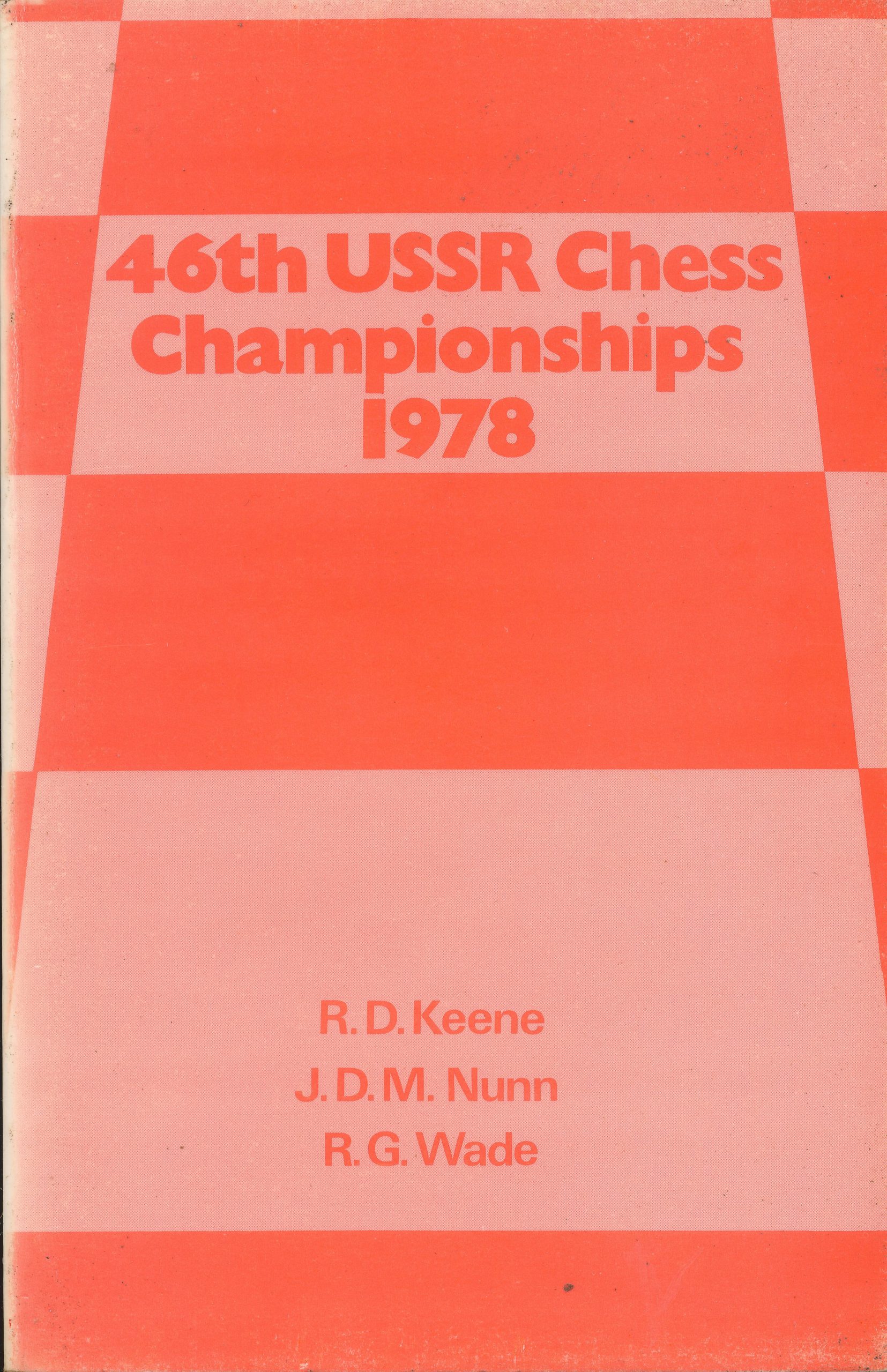


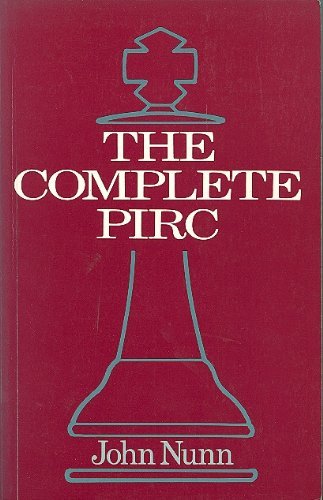
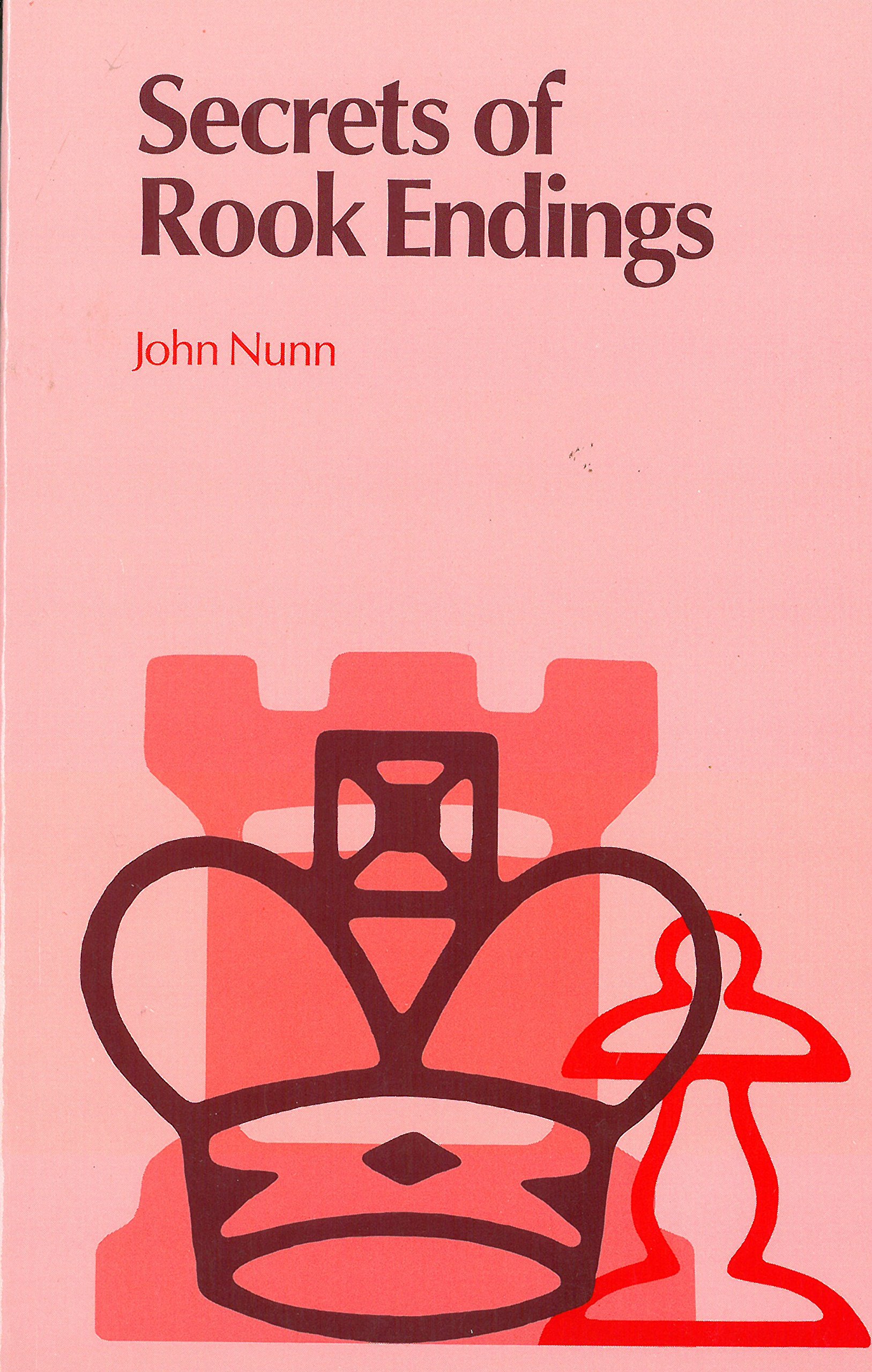
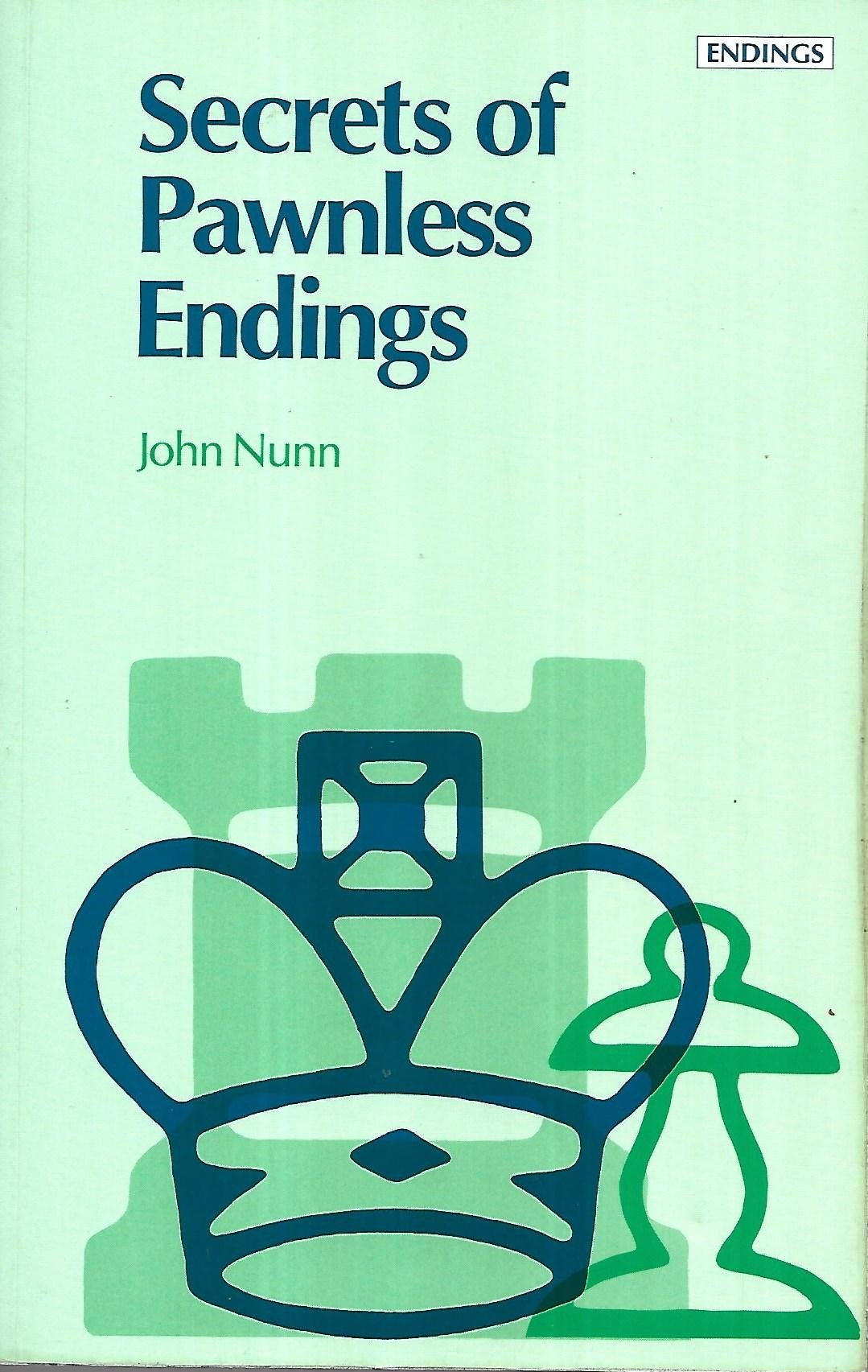
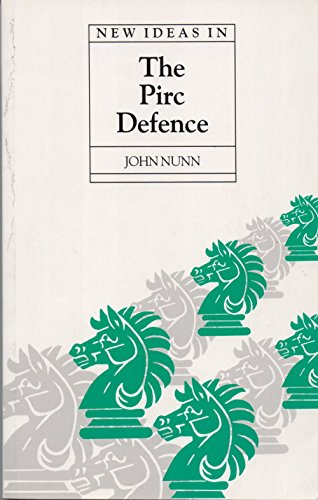
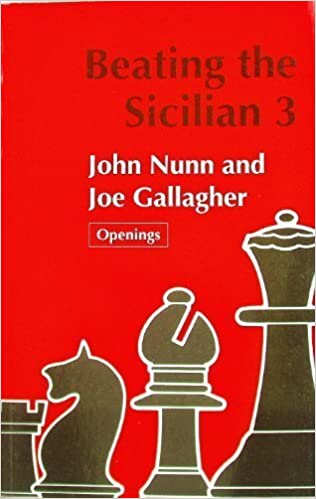


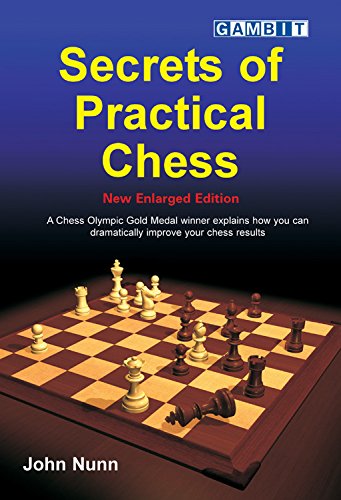
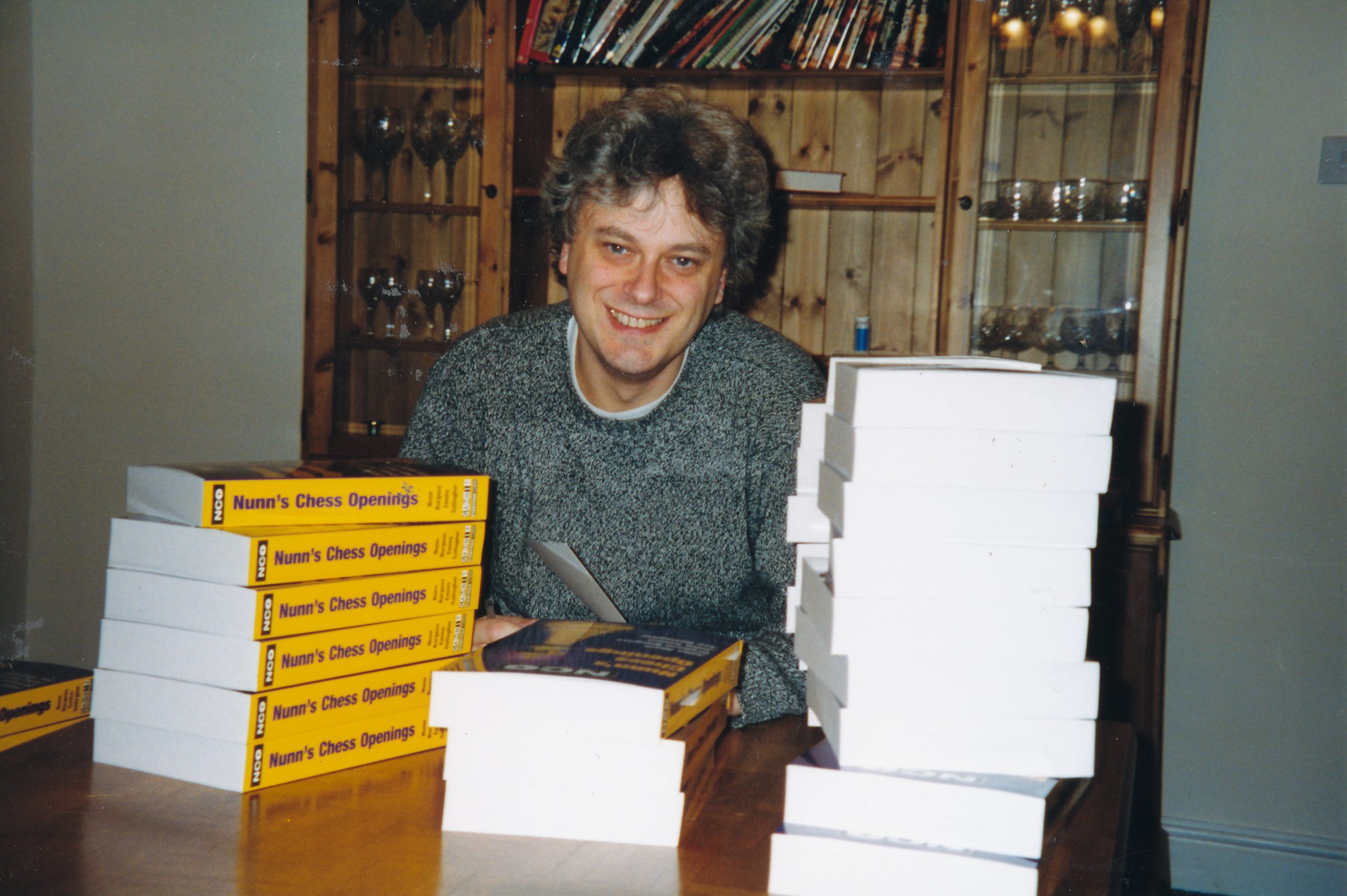


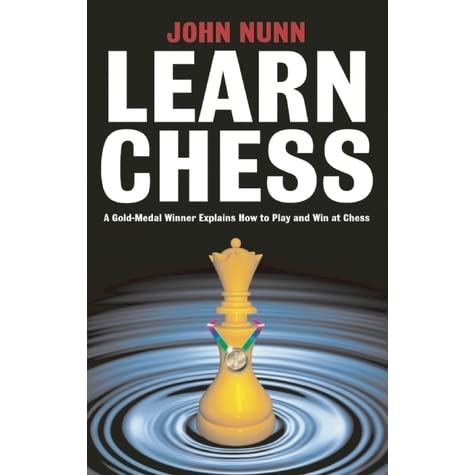
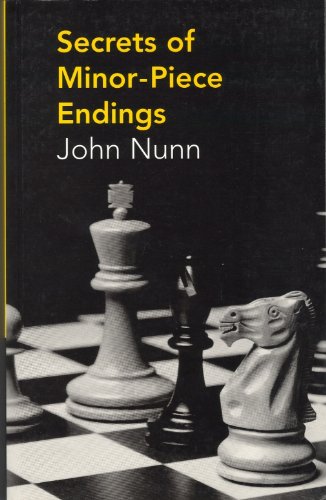


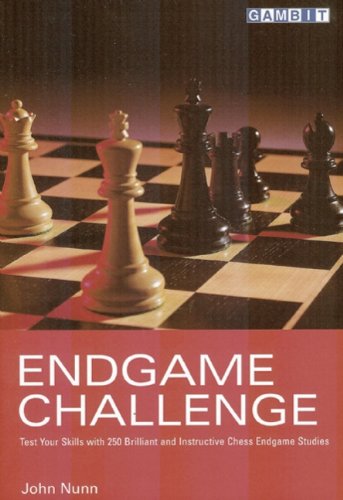
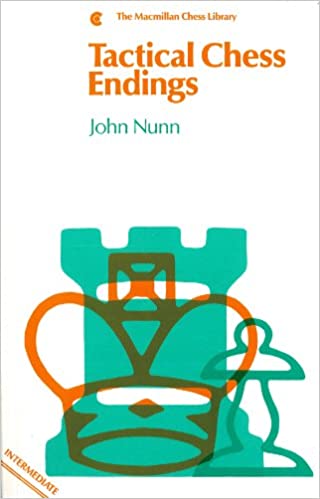
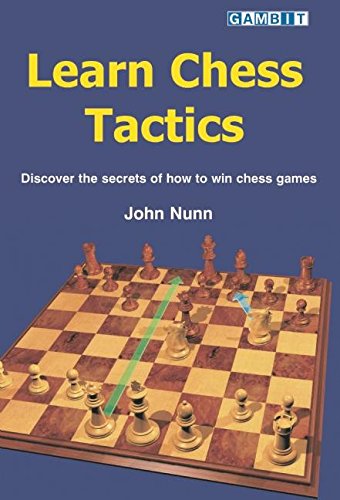
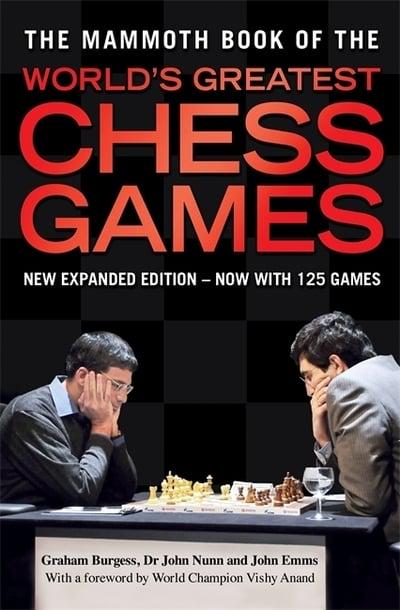

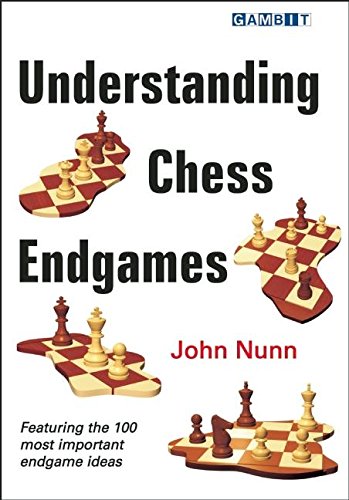


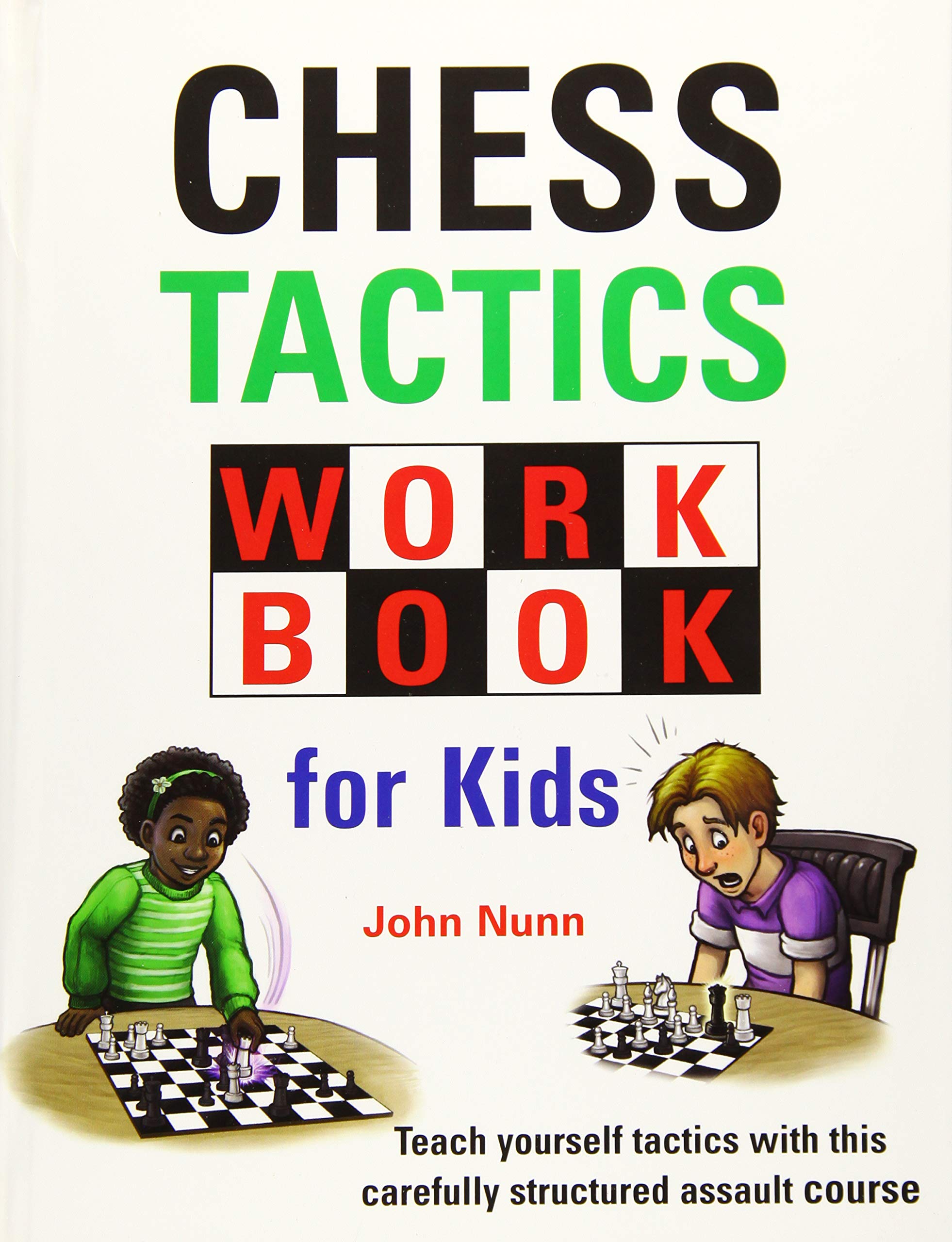
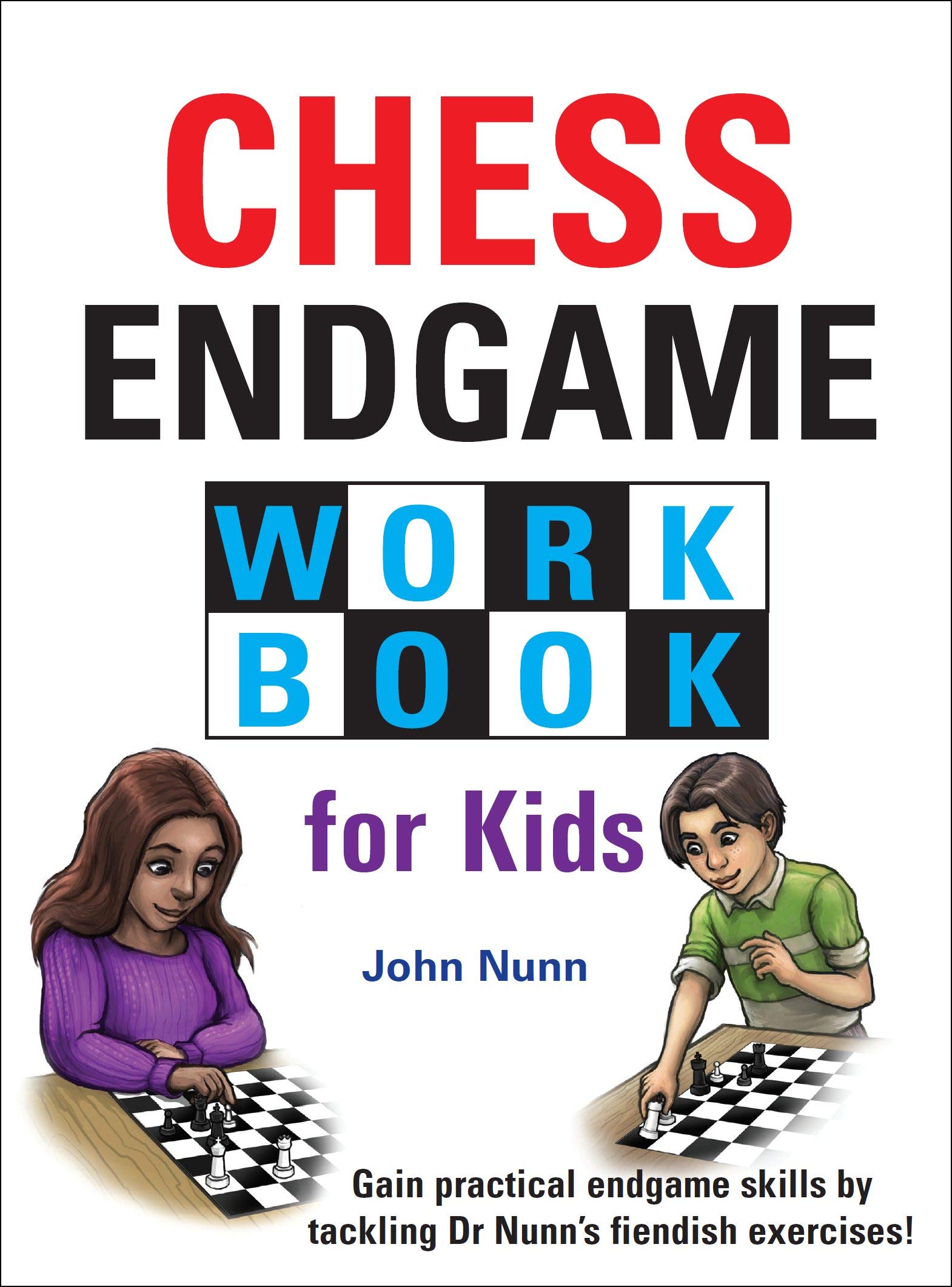

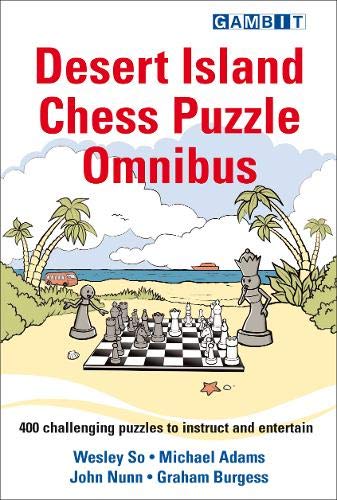
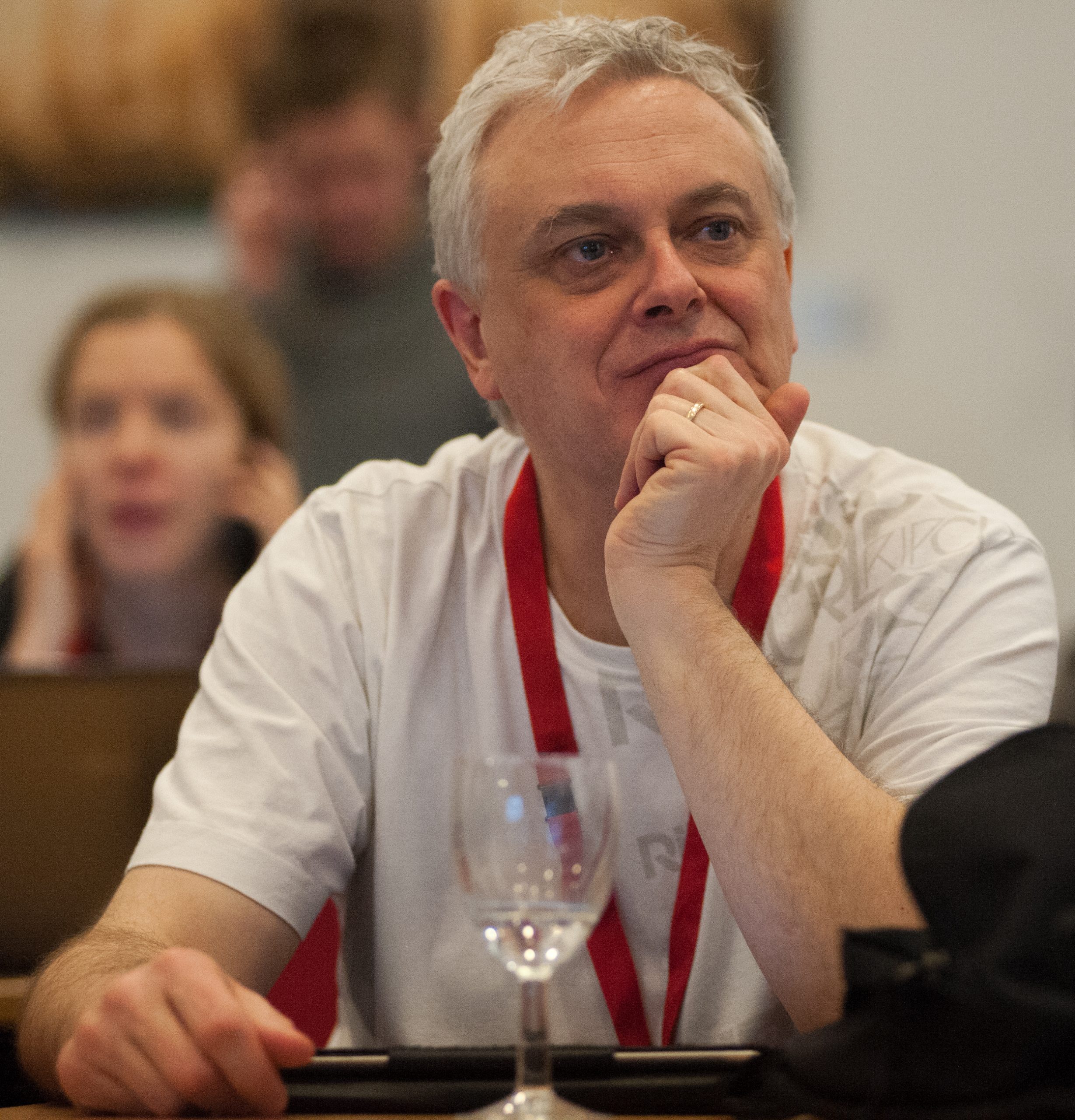
Happy Birthday FM Gary Kenworthy (22-iv-1957)
Gary was born in Bradford and became an FIDE Master in 2002 and achieved a peak rating of 2315 in July 1994.
In 1994 Gary represented London in a match with Paris over nine boards and has played from London Central YMCA (CentYMCA) and Barbican in the London Chess League and in the BCF National Club competition.
In 2003 he was runner-up (to Kidami Sundararajan) in the Ron Banwell Masters in Blackpool.
Gary has played for King’s Head in the Four Nations Chess League (4NCL) and now plays for Mindsports.
In 2019 Gary joined the England Chess Coaching Team. He founded Bletchley Junior Chess Club and Chess School.
He has been board 1 for Milton Keynes and Open University First team. He is board 1 for the Bedfordshire County Chess Team and has retained the Bedfordshire Individual County Chess Championship Title. In 2019/2020 he was board 1 for the Leighton Buzzard Chess Club.
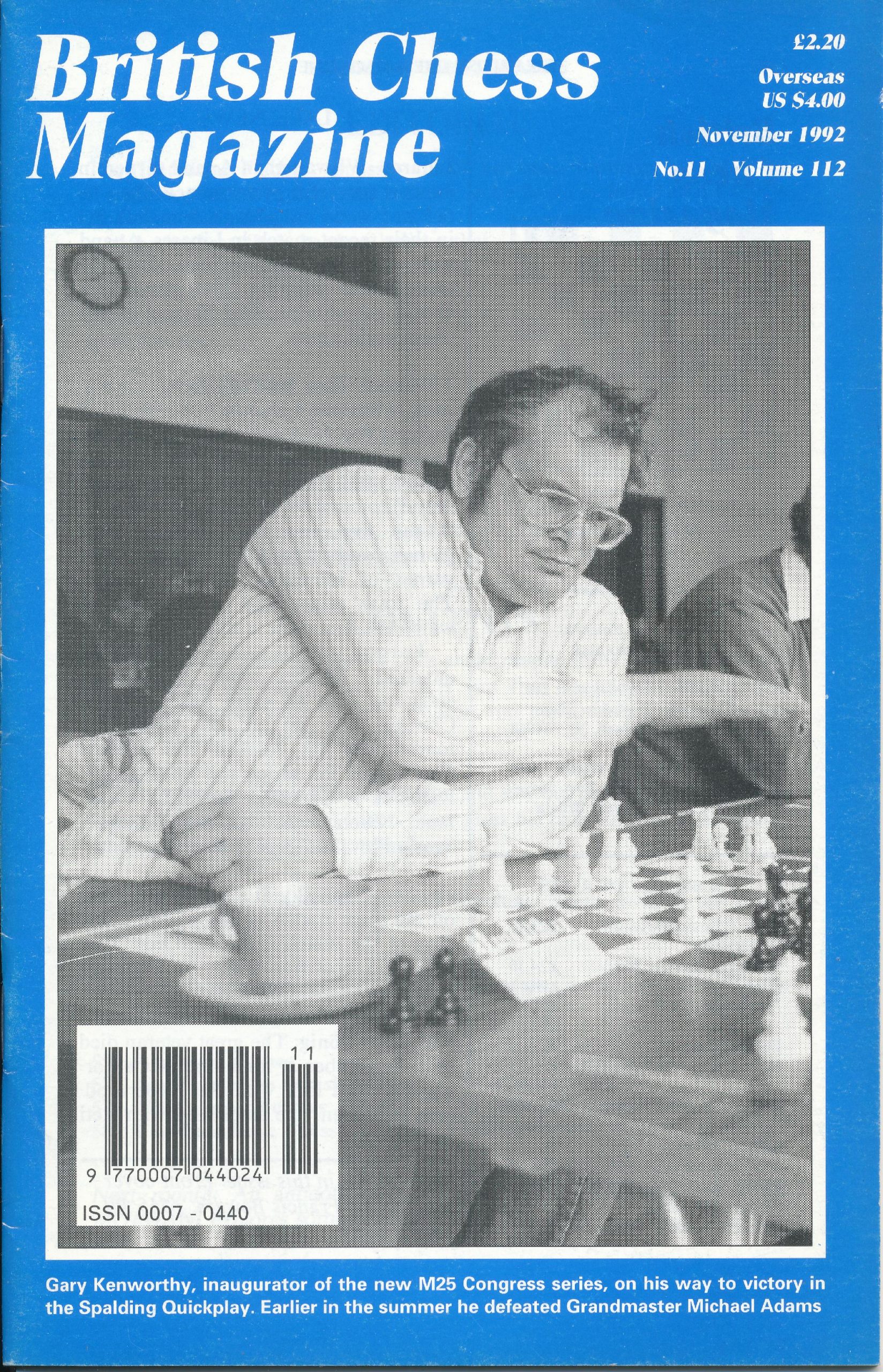
Gary is a former Director of Chess Coaching for the (then) British Chess Federation (BCF).
Gary lives in Fenny Stratford, Milton Keynes and is an IT consultant and local councillor. He has been a former Director of the BCF.
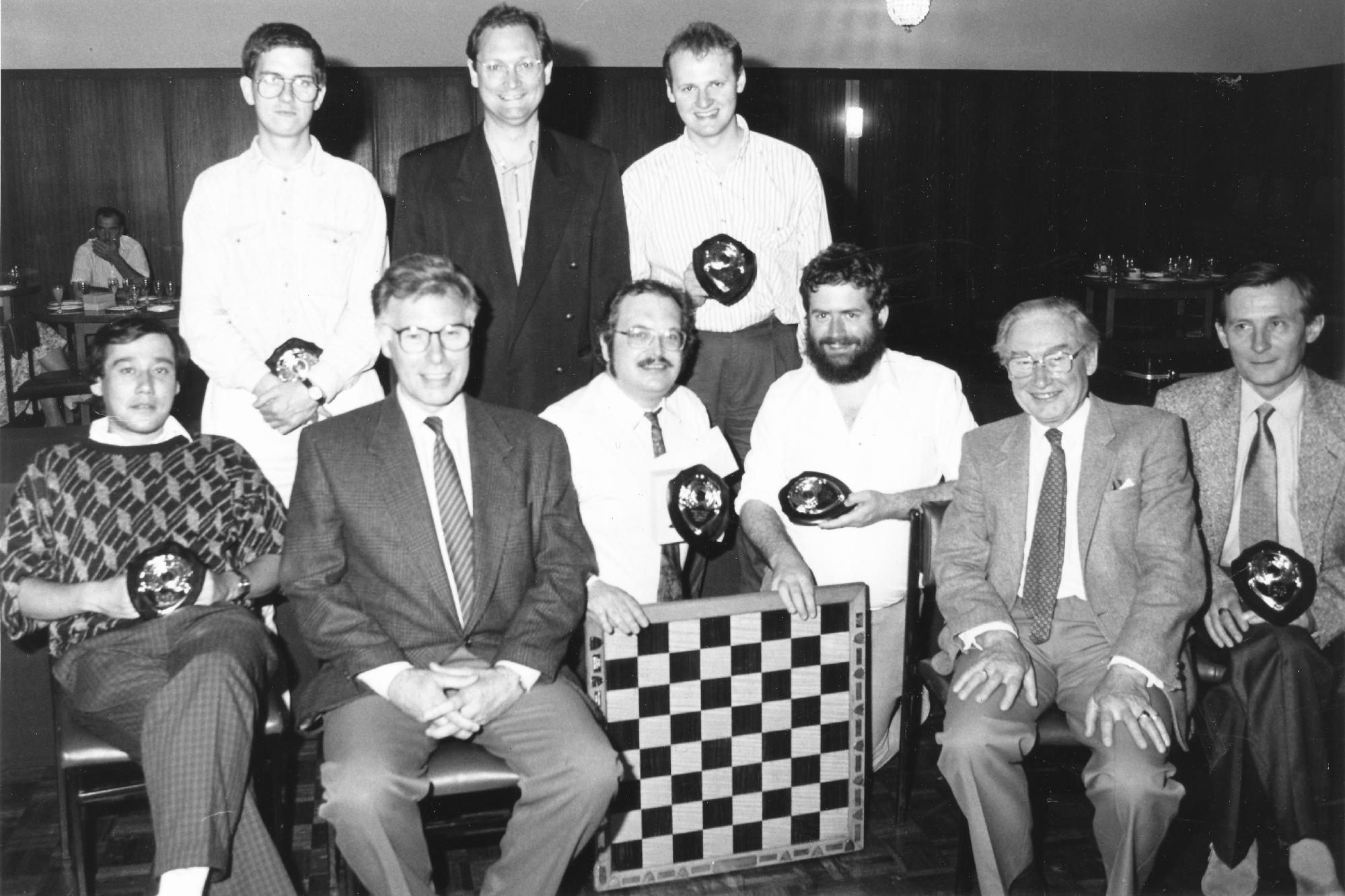
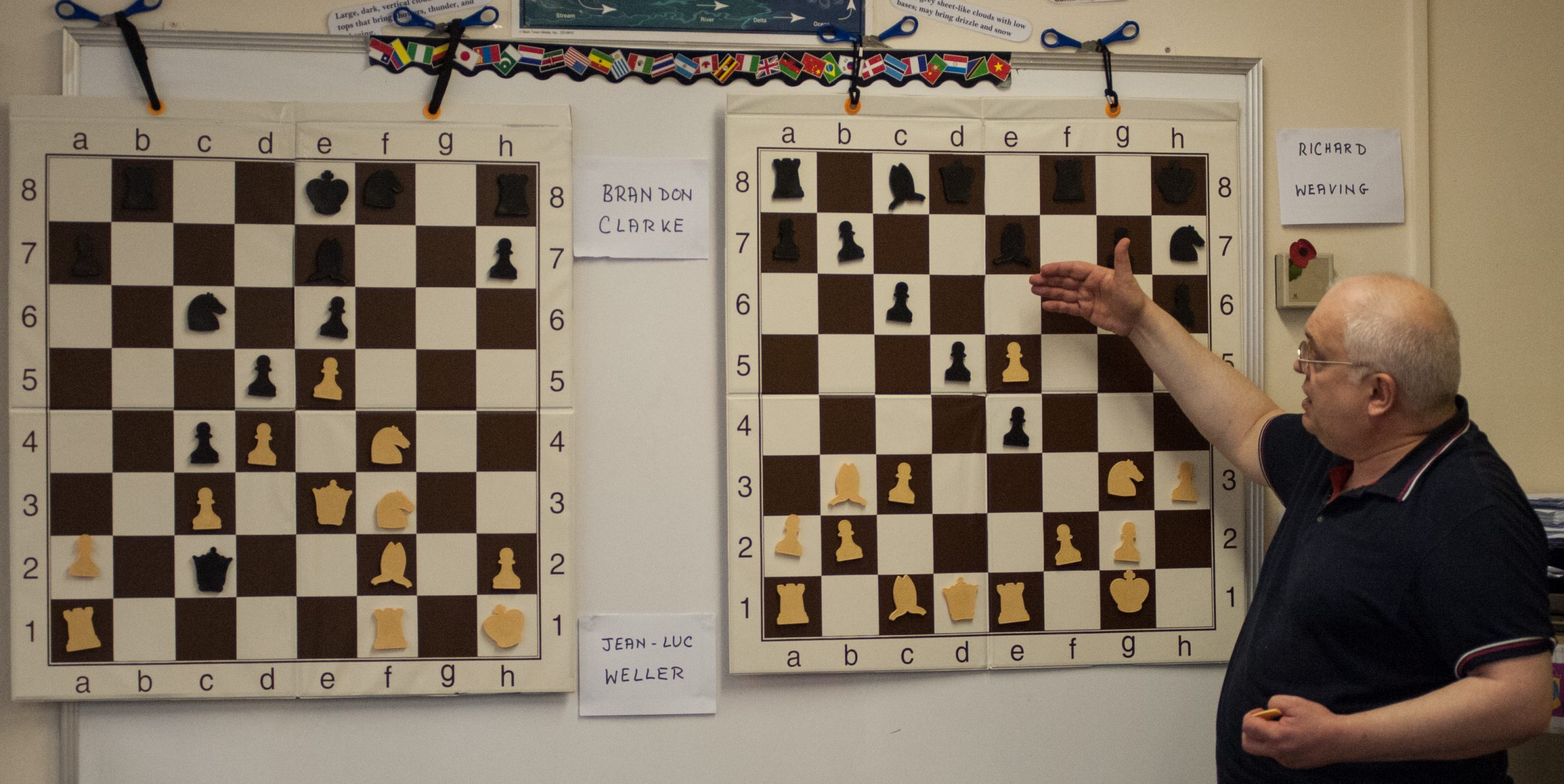
BCN wishes Happy Birthday to GM William Nicholas Watson (18-iv-1962)
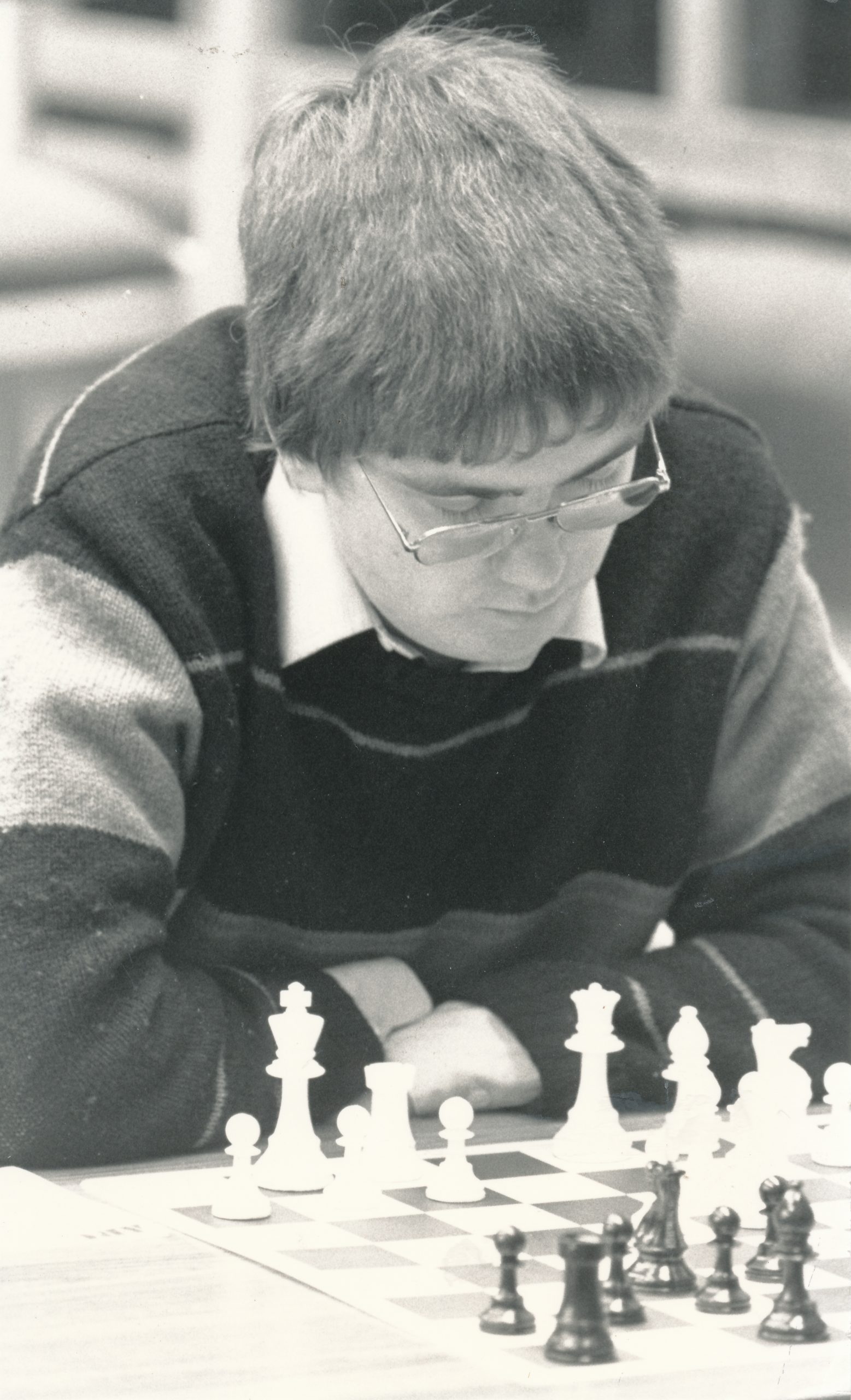
Here is his brief Wikipedia entry
This was written about William who was 16 just prior to the 1979 Spassky vs the BCF Junior Squad simultaneous display :
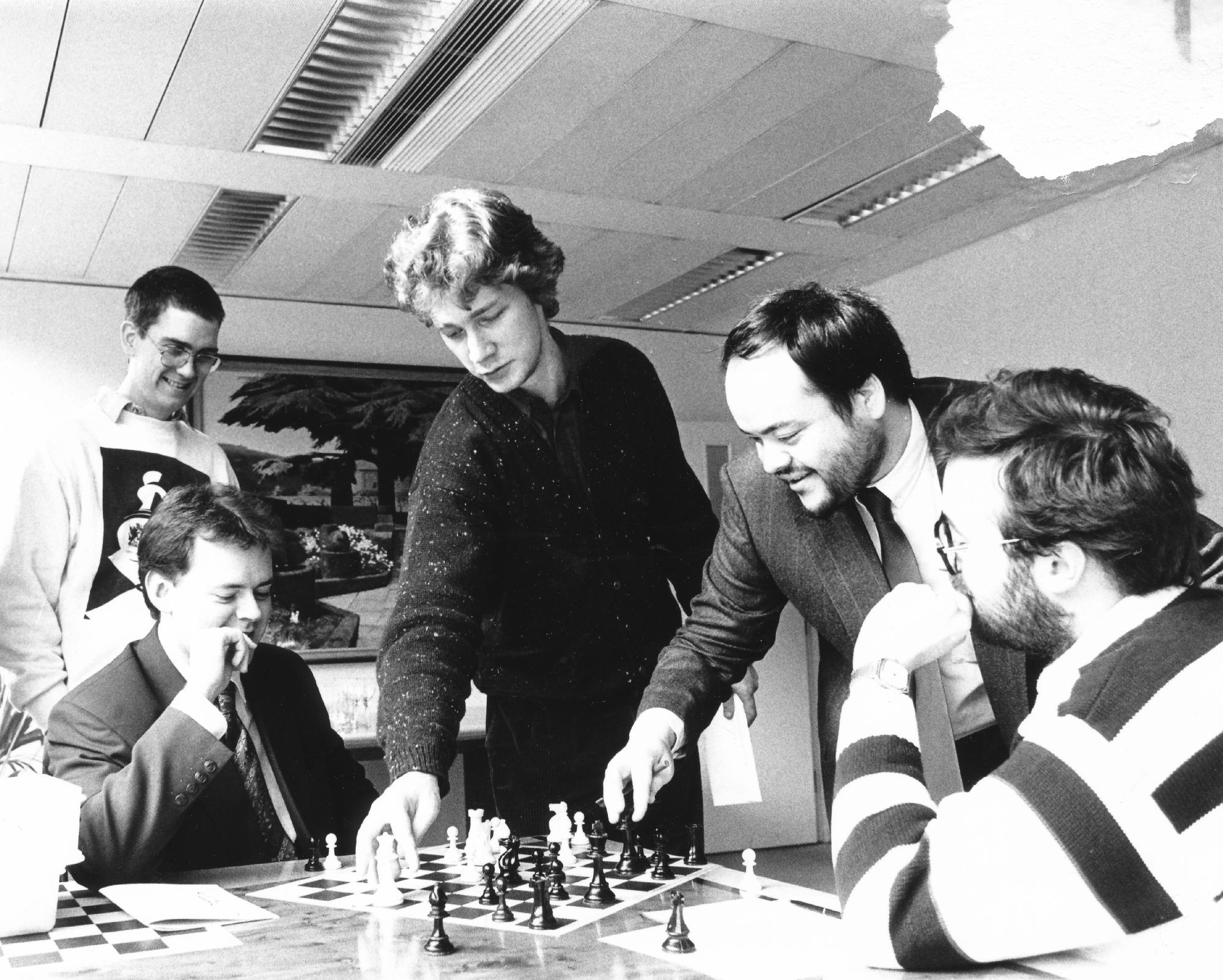
“St Paul’s and Barnes. Rating 204. British under-21 co-champion, 1977. 16th British men’s championship, 1978.”


On March 3rd, 2016 William became a trustee of the Chess in Schools and Communities charity.
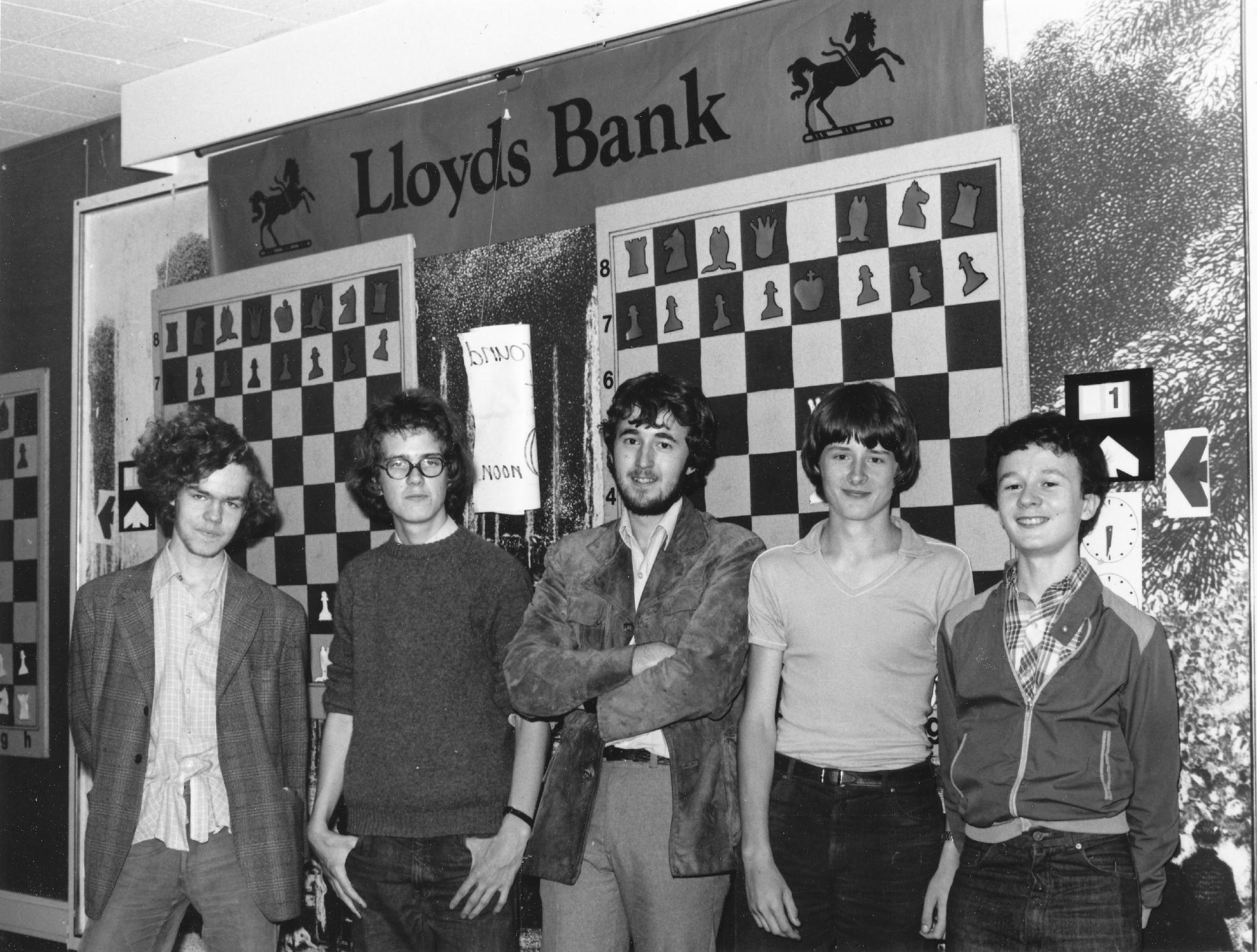
BCN wishes Happy Birthday to GM Peter Kenneth Wells (17-iv-1965)
Here is his very brief Wikipedia entry

This was written about Peter aged 13 prior to the Spassky vs the BCF Junior Squad simultaneous display in 1979 :
” St John’s College and Portsmouth. Rating 174. British under-14 co-champion, 1978.”
and from chessgames.com :
“Peter Kenneth Wells was born in Portsmouth, England and became a FIDE Master in 1982, an IM in 1987, and a GM in 1994. He is also a FIDE Senior Trainer (2015).”

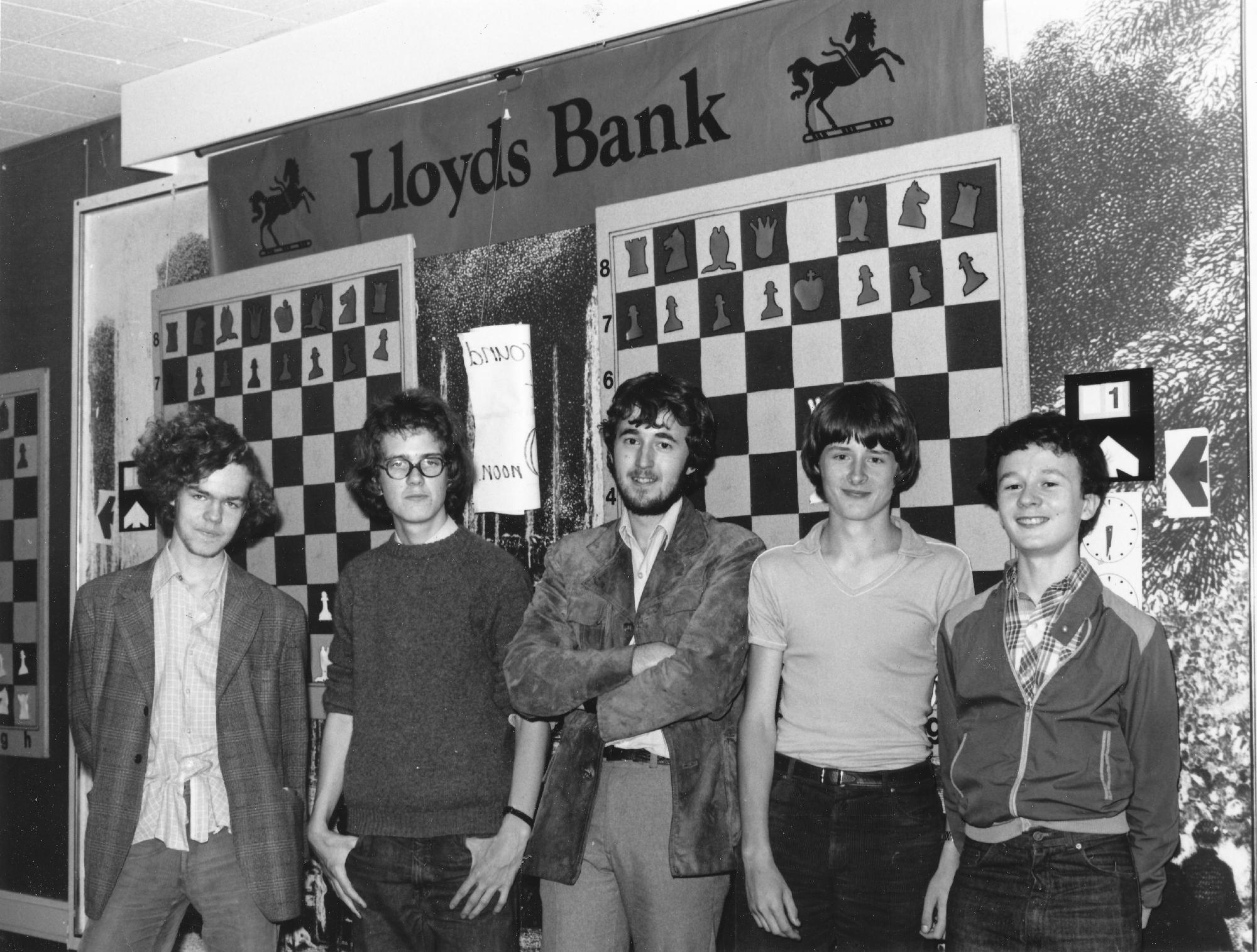



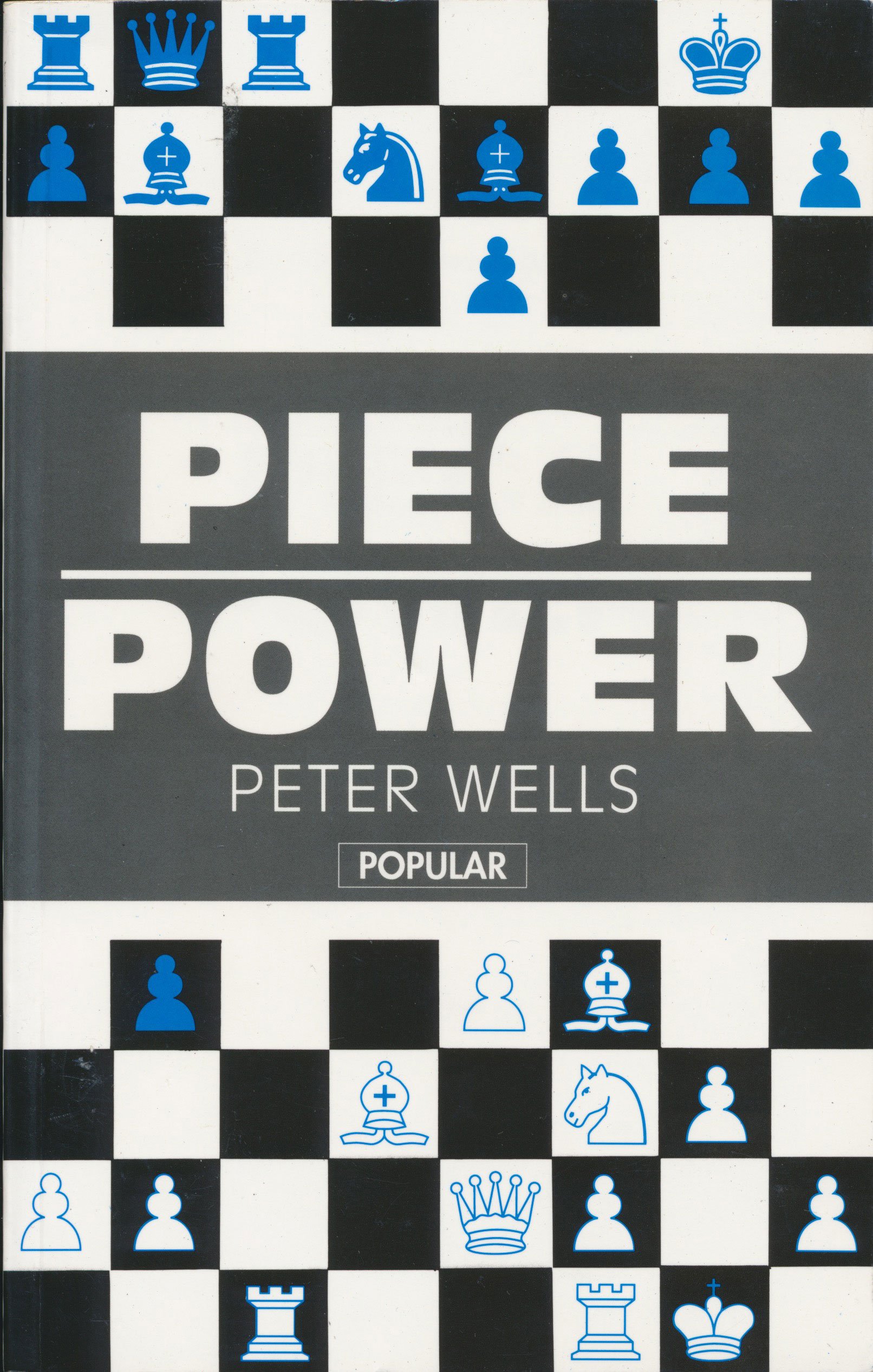
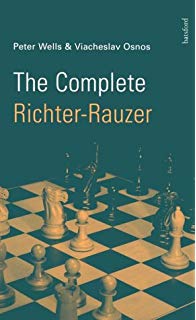




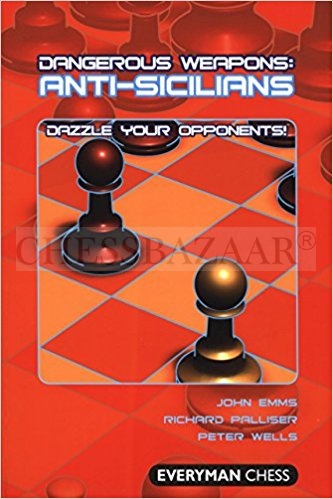
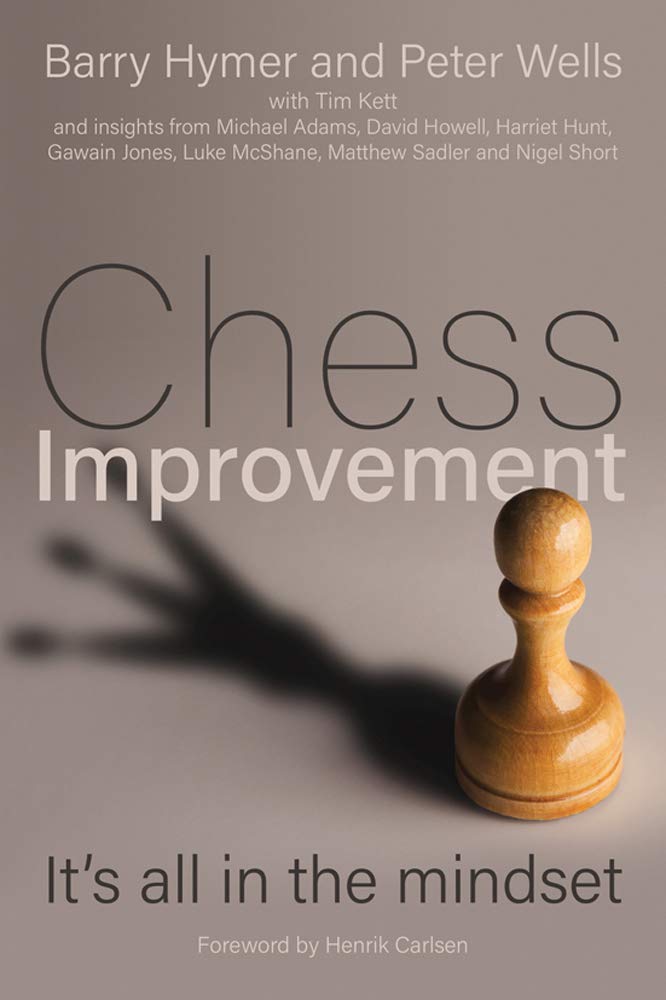
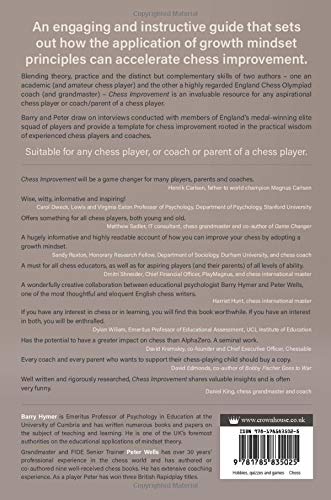

BCN wishes a happy birthday to Peter Markland born on Friday, April 13th, 1951
From the rear cover of “Sicilian:…e5 :
“P.R. Markland is a British Master, and a member of many English international teams, including those at the 1972 and 1974 Olympiads, and is also a British correspondence international”
Peter first qualified to the British Championship in 1967 (Oxford) and obtained an IM and GM norm at Hastings 1971.
In 1984 he became a Grandmaster for correspondence chess (GMC).
Peter became a banker and lives in Woodbridge, Suffolk, IP13.
Following excellent recent work by Paul McKeown, the English Chess Federation made a request to FIDE to grant Peter the much overdue title of FIDE Master. This was awarded in 2021.
From British Chess (Pergamon Press, 1983) we have this contribution from Peter himself:
“1951 seems to have been a vintage year for chessplayers and although I cannot claim to count myself in the company of Andersson, Karpov, Ribli and Sax we do all share the same year of birth.
Although I learned the moves at the age of 5, I only took any real interest in the game at 13 when I began to play schools chess. Compared with such as Nigel Short I was a very late starter!
I was educated at Bolton School and played for Bolton and Lancashire in my early years. This was fortunate in that all three of these teams enjoyed great success in the late 1960s. In all three teams I played along side Martyn Corden who was to precede my rise to international level himself by playing in the Siegen Olympiad team in 1970. In 1967, I qualified for the British Championship at my first attempt and I was pleased to score 5/11. The following year the school team won The Sunday Times tournament playing without Martyn Corden in the finals.
Up to this time I had concentrated chiefly on junior teams and had won the NCCU junior titles. Over Christmas and New Year of both 1966-7 and 1967-8 I travelled down to play at the Devon Junior Congress at Plymouth but in 1968 I decided to try my luck at Hastings. This proved to be one of the turning points of my career.
I was placed in the Challengers Reserves for 1968-9 and after the first round loss (to the eventual winner) my play gained momentum and I qualified for the Challengers the following year. The intervening year passed quietly with a trip to Ireland in the Glorney Cup. I went up to Balliol College, Oxford in October 1969.
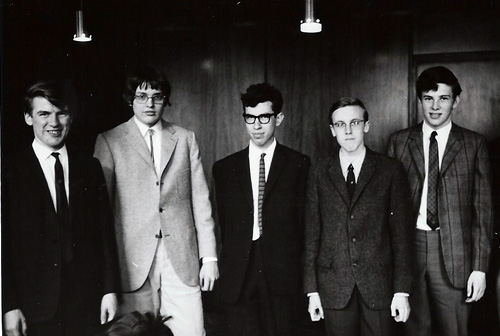
The Hastings Challengers tournament 1969-70 began when I met the same opponent as in the previous year in the first round. This time I managed to come out on top. By the time the last round came, I had played most of the leaders and had 6/8 including two pleasing wins with my favourite defence at the time – the Sicilian Pelikan variation.
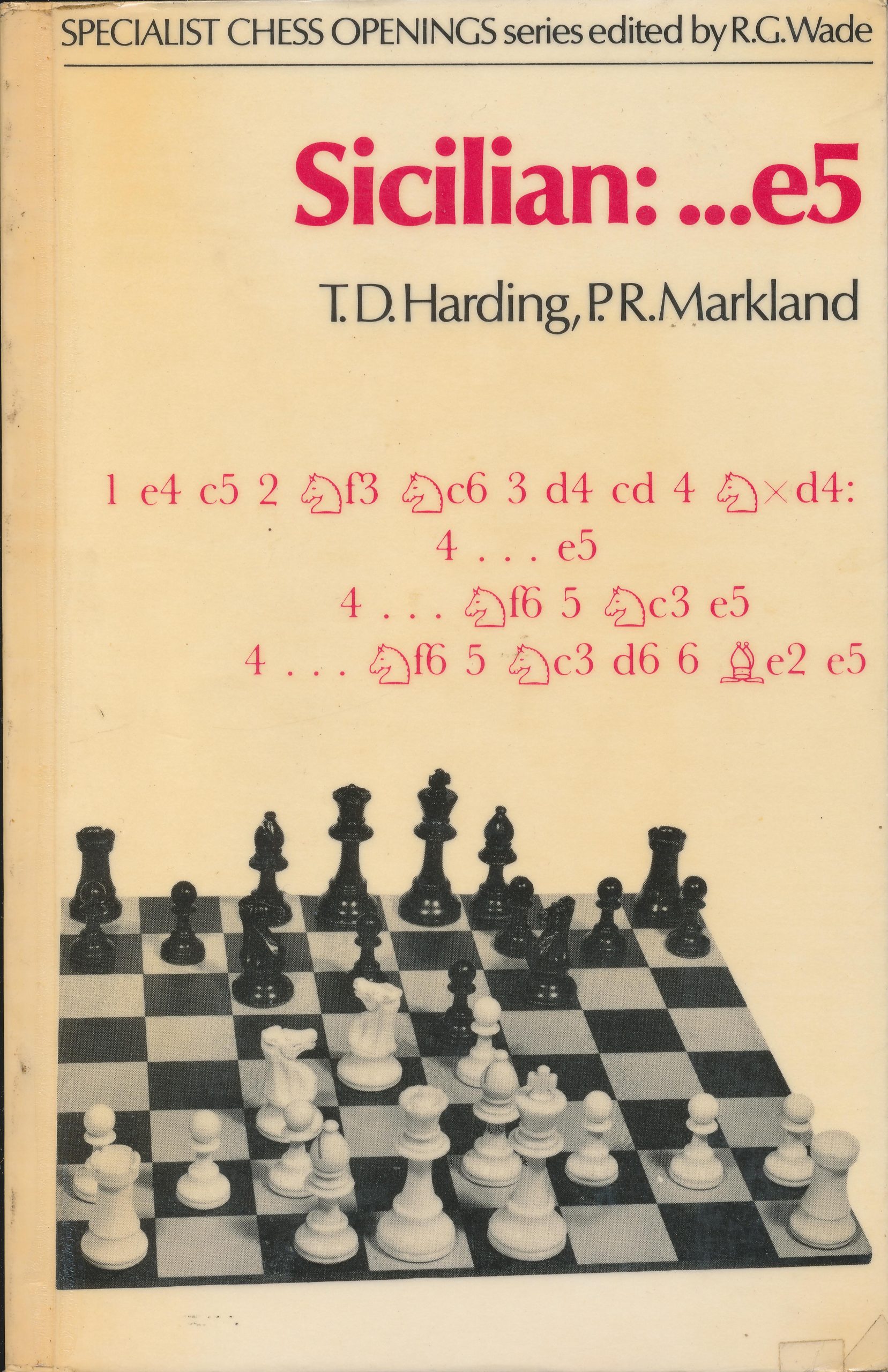
In the last round I was paired against de Veauce who had a reputation as a good strategist and whom I hoped to unsettle tactically. I had white and my plan failed. He outplayed me in the opening and middlegame and I sacrificed my isolated centre pawn to activate my pieces.
So I then had to wait had to wait to see the other results before I could confirm a somewhat lucky place in the Premier.
In 1970 I had the opportunity to travel with the student team to the Olympiad in Haifa. My score of 5.5/7 was reasonably pleasing but the standard of opposition was far from good.

At the end of the year came the Hastings Premier – a tournament which I can only describe as the highlight of my career. I began nervously and lost a nondescript game to Uhlmann in the first round. My confidence grew with two comfortable draws with Portisch (the eventual winner) and Keene. In round four I met the surprise leader, Mestrovic (who had 3/3) and perhaps partly due to the fact that this game was played on 1st January I won convincingly in 18 moves.

The next four rounds brought an uneventful draw with Wade and three exciting encounters with Byrne, Krogius and Gligoric all of which after several reversals of fortune ended in draws.

In the last round I was to play Hort who needed to to win to gain a share of first prize. He played a horribly passive opening and by move 14 I was already well on top. To try to compensate he snatched a queenside pawn and gave me the chance to play the type of move one can only dream about!
This victory meant an equal second on 5/9 with Gligoric, Hort, Krogius and Uhlmann and both a GM and IM norm.
As a result of this I became a regular member of the England side. During 1971 my results were erratic, possibly caused by too much play. I was pleased with my 3.5 score in my first Clare Benedict, although I lost my first game for England due to nervousness and I was first equal with George Botterill in the Slater Young Masters at Hastings (again). Here I declined a last round draw offer, blundered almost next move and lost to an up-and-coming junior by the name of Michael Stean! On the debit side my performances in the British Championship, The Oxford International Congress and the Robert Silk tournament left room for improvement.
Whilst playing with Bolton in the National Club Championship, we had never won the competition although we had reached the semi-finals many times. This year, 1971, playing for Oxford University, we won the tournament beating our old rivals Cambridge University in the final on board count.
The Hastings tournament of 1971-72 saw me firmly entrenched near the bottom. It is very difficult in this type of international tournament when one becomes marked as an out-of-form player. All the other players make extra efforts to beat you and this drains your strength further.
My main problem at Hastings was a lack of defence to 1.e4. I lost five games against this move. In the last round I had a very interesting struggle against Karpov who needed to win this game to tie first with Korchnoi who had beaten him in the previous round, but the strength of 1.e4 proved too much.
The summer of 1972 saw the advent of my University finals and thus I played very little for the first six months of the year – even I had to decline an invitation to the Teeside GM event. Later in the year I played in the student Olympiad in Graz and then in the Olympiad is Skopje.
In the preliminaries we had drawn Yugoslavia and Switzerland, who were the only other teams likely to qualify for the ‘A’ final. We missed qualification narrowly and I think that every team member had one poor result in the qualifying rounds – mine being a scraped draw against a Syrian team.
We won the ‘B’ final by beating the Israeli team in the last round and I felt pleased by my score of 11.5/16 with no losses. Indeed, in my last round game with Balshan I was quite rightly instructed to agree a draw in a winning position to secure the team’s first place.
I feel that this tournament from my point of view aptly demonstrates the difference in title norms in the early 1970s and today. I played five players who had no Elo ratings and only four titled players. Hence an IM norm would not have been available under any circumstances. The main reason for the lack of Elo ratings in 1972 was that the new system had only just been introduced and for many players this was their first Elo-rated tournament. In the last Elo list, all but one of the sixteen players are rated, there are now four GMs and five IMs amongst my opponents and the norm figures would be 10.5/16 and 12.5/16 for IM and GM respectively.
Here is my best game from the Olympiad. It is indicative of an early combination prevailing through into a winning ending.
In 1973 I was once more plagued by too many invitations and played indifferently throughput the year. The only bright spots were my score of 3/7 on boards 3 and 4 of the European Team Finals and second place in the Woolacombe International.
1974 was once again an Olympiad year. The England team won the Clare Benedict for the first time in Menorca and I was able to contribute 5/6 winning both a board prize and the best score prize. I was drafted into the Olympiad team as a late replacement and although we qualified easily enough for the ‘A’ finals this was in no way due to my efforts as I had a 50% score in the preliminaries.
We had qualified for the ‘A’ final with one round to spare and our last group match against the USE (from which the score was to be carried forward) began the final matches. It had been decided, as a tactical measure and in our view of our differing styles, that I should take black whenever we had this colour on the fourth board, so that Whiteley and Stean could utilize a greater proportion of whites. This worked to a limited extent and indeed, Stean obtained an IM Norm. Also, as it worked out I played in matches against seven of the top eight teams (being rested against Yugoslavia) and only three teams below us. In the end, I was pleased with my +3 =1 -4 with black in the finals to give overall a 50& score.
During 1973 and 1974 I was co-author of two books in the Batsford opening series, both with Tim Harding on Sicilian Defence variations.
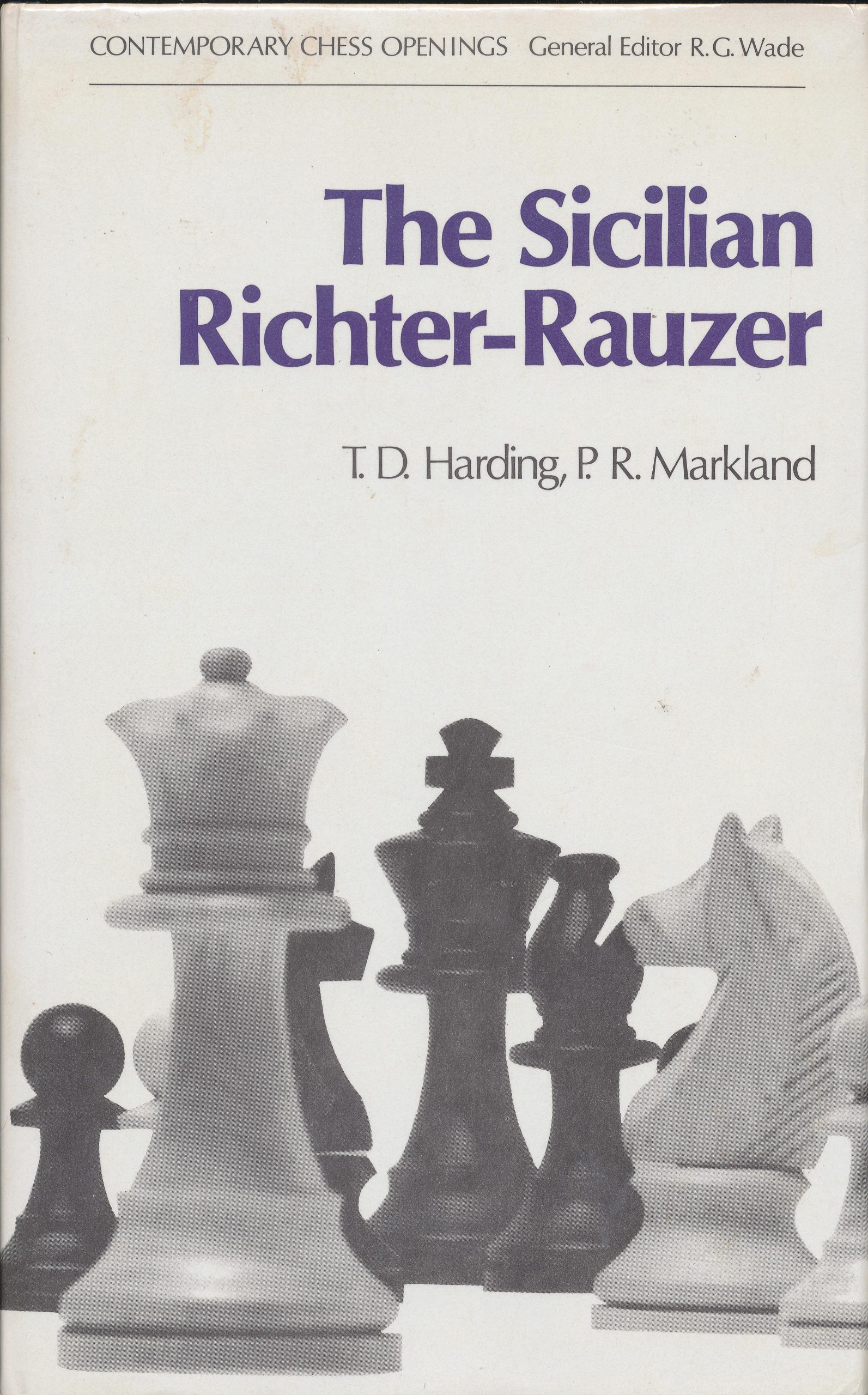

I also wrote a best game collection of Karpov which was by far the most interesting of the three books to write.

At about this time, I decided to embark upon a career in banking and to abandon that of a professional chessplayer. Since then I have concentrated on correspondence chess.
Having received master certificate, I entered a European and World tournament in both of which I finished first. The second of these two results qualified me for the world Championship Semi-finals. But first attempt in the eleventh championship ended in failure to qualify.
As a result of an invitation received by the BPCF I played in the Eino Heilimo Memorial Grandmaster event. I have , however, qualified as a postal IM by scoring the required seven points and had an outside chance of trying for first place at one stage.
Here is my best game from this event.
Here is his brief Wikipedia entry.
The English Chess Forum has discussed Peter.
Peter’s games are here.
BCN wishes happy birthday to IM Harry James M Grieve (12-iv-2001).
He was born in Guildford and spent most of his childhood a resident of Fleet in Hampshire before moving to Camberley, Surrey.
Here is an article from Harry’s school, RGS Guildford.
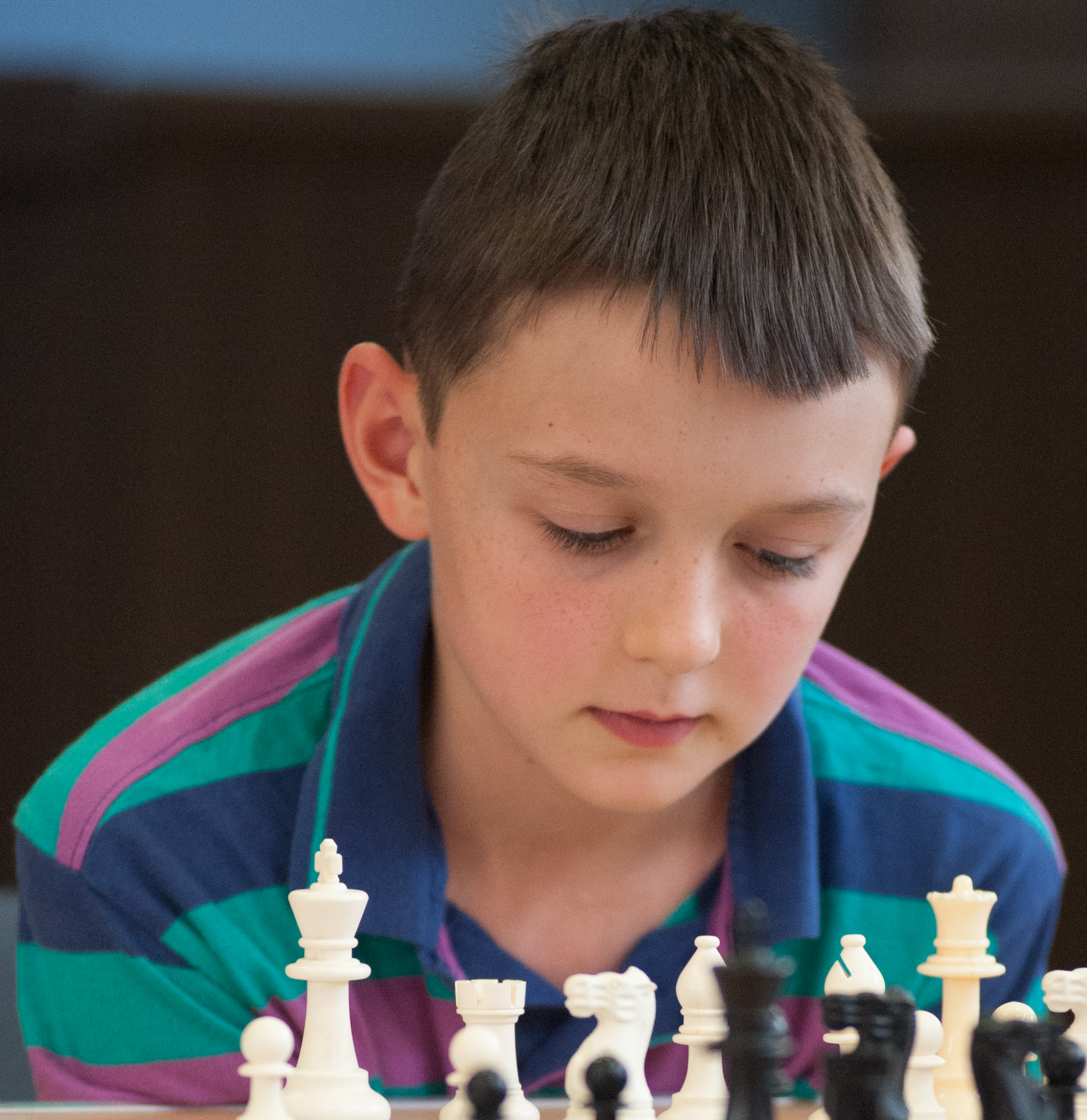
Harry is studying mathematics at St. Catherine’s College, Cambridge having previously been a pupil and member of the strong chess team of Royal Grammar School, Guildford with team mates such as Alex Golding.
He started his evening league chess in the Cody Sports and Social Club with Fleet & Farnborough Chess Club (same as Simon Williams) and then transferred his allegiance to the stronger Farnham chess club playing top board in many matches.
He was recruited to the AMCA 4NCL team by IM Andrew Martin and then played for the BCM 4NCL team and now plays for Guildford in 4NCL and Farnham in the Surrey Border League.
Round 5 of the Caplin Hastings International Chess Congress featured the board 10 clash between one of England’s stronger Grandmasters, Danny Gormally (2508) and FM Harry Grieve (2299).
Here is their game :
Following this game Harry needed 2.5/4 to obtain his first IM norm.
In January 2022 Harry travelled to Roquetas de Mar in Almeria, Spain for the 33rd Roquetas de Mar Open where he scored 7/9 and his first IM norm. Harry kindly agreed to annotate his best game from this event for BCN:
Here is hoping that further norms will be shortly forthcoming!
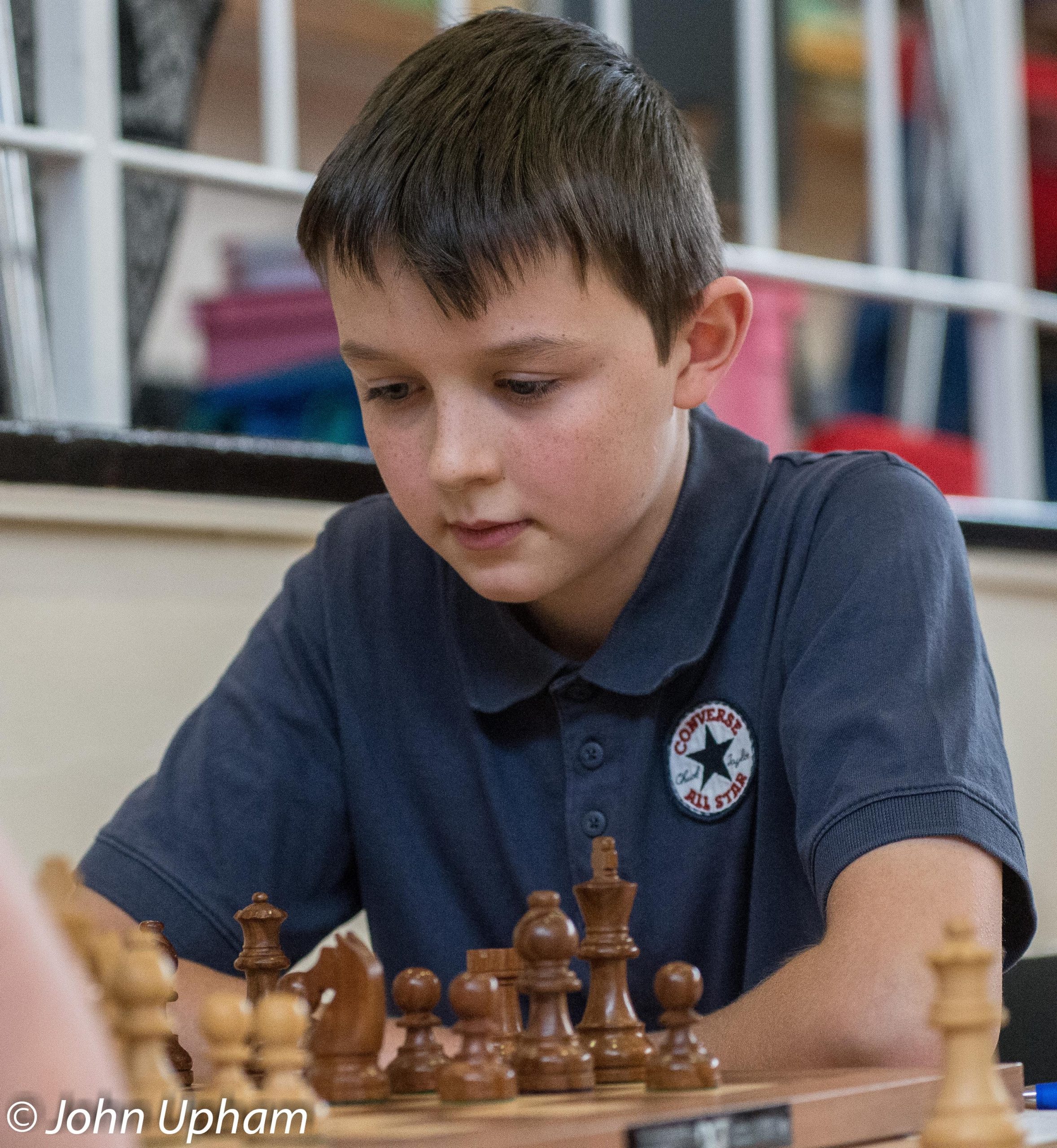
At the fourth FIDE Council of 2022 Harry was granted his full IM title.
His performance at the Chessable British Chess Championships 2022 of 7.5/9 was sufficient to gain his first GM norm exceeding the requirement by 0.5 points.
During the 2022 / 2023 4NCL Harry played for “The Sharks 1” on various boards with his team taking full advantage of the FIDE 80 point rule to vary their board orders. Harry played in every round and scored 9.5/11 earning his second GM norm.
Surely the third and final one will be achieved in 2023?
Birthday of FM Erik Oskar Michael Charles Teichmann (11-iv-1961)
Erik was born in Westminster, London, his mother Jenny (née Jorgensen) being Danish and his father was Max Teichmann (thanks Richard James!). Jenny Teichman was a Philosopher.
They lived in London for two years and then emigrated to Melbourne, Australia until Erik was six when Erik and his mother moved to Cambridge, England. Erik played much chess in England including the British U-18 and U-21 championships, Lloyds Bank events.
This was written about Erik when he was 17 just prior to the Spassky vs the BCF Junior Squad simultaneous display :
“Perse School and Cambridge city. Rating 190. Cambridgeshire men’s champion. 2nd British under-18 championship, 1978.”
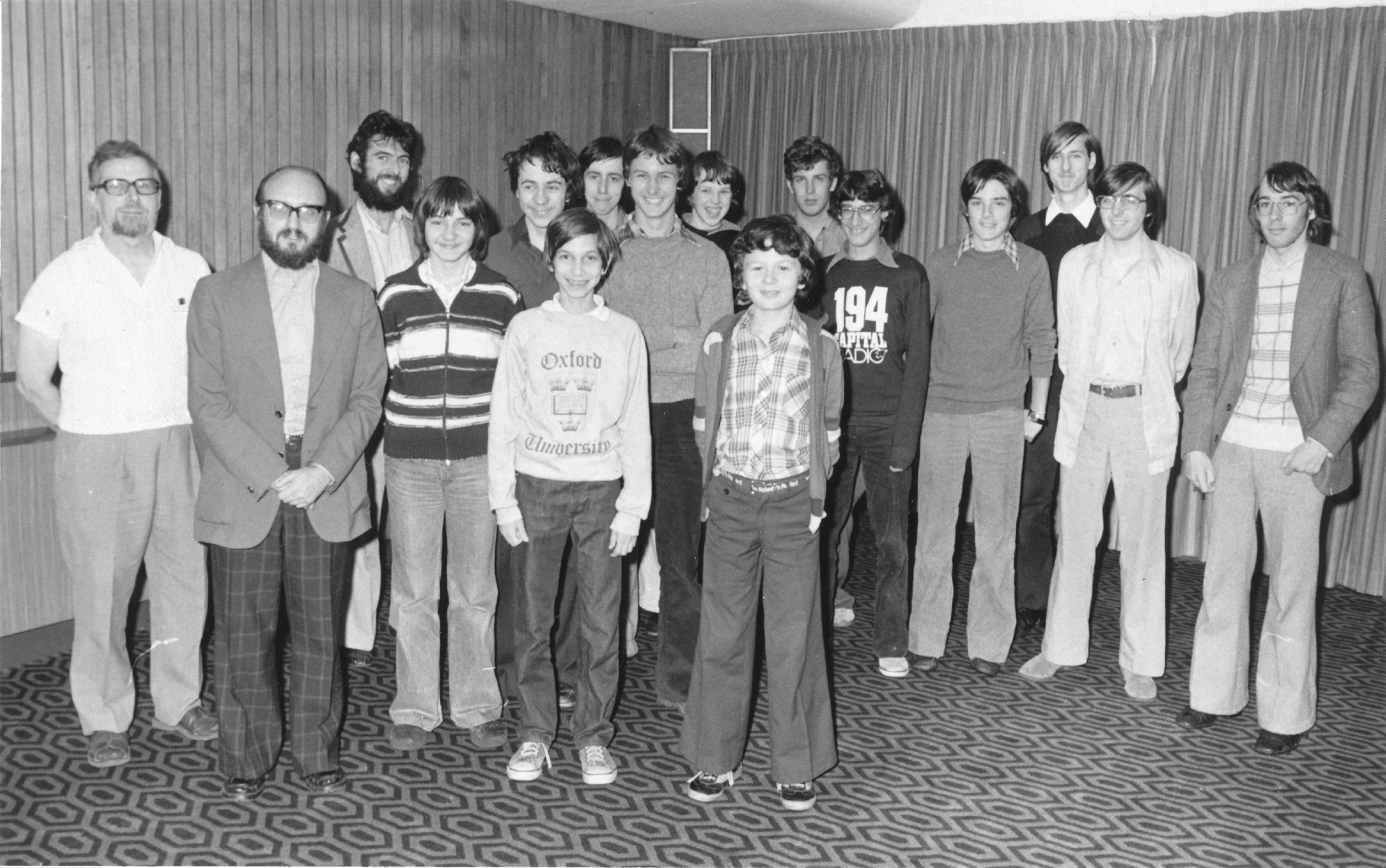
and the Islington, Lewisham, Charlton and other opens swisses. Erik played for Oxford University (Magdalen College) in the 1982 (100th) Varsity Match drawing with Gareth Anthony (Trinity Hall).
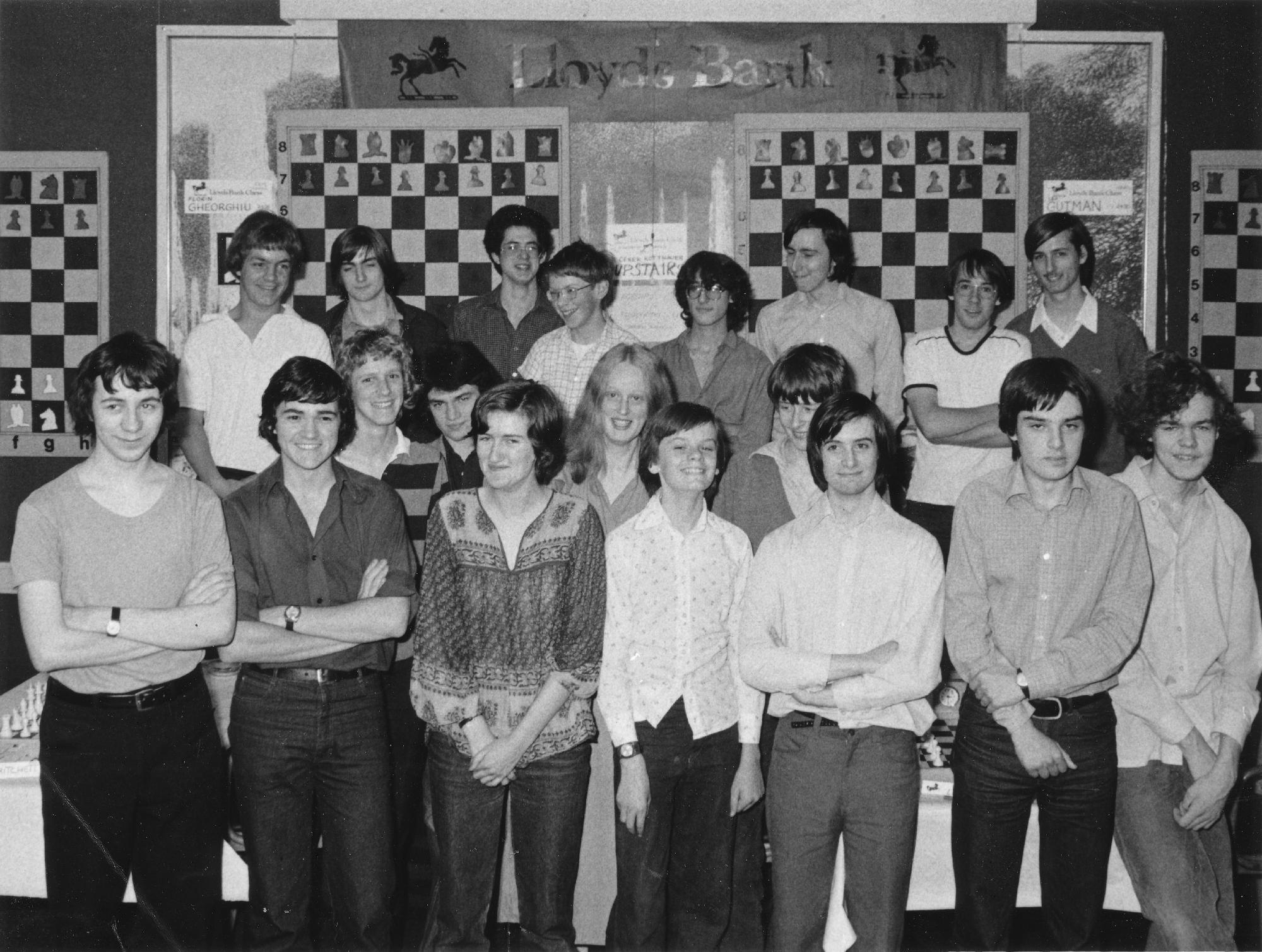

In 1985 Erik emigrated once more to Australia living in Eltham, Melbourne and became a lifestyle guru and coach.

Erik became a FIDE Master in 1990 and his peak rating was 2388 in July 2010.
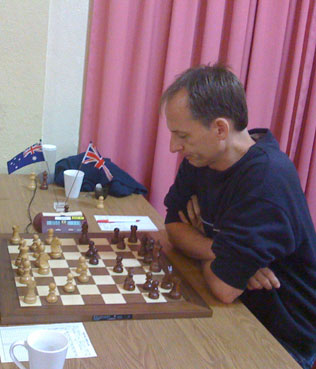
From Chessgames.com :
“FIDE Master Erik Oskar Michael Charles Teichmann won the Nova Scotia Open in 1999.”
Here is Erik’s favourite game :
Erik now lives in Lyon, France with his girlfriend, both being Buddhists.
Erik has been faithful to the Polish or Sokolski Opening and anyone contemplating playing this should study his games. Erik very recently played Tony Kosten in France and maybe we will see him on our shores once more to play in 4NCL !
